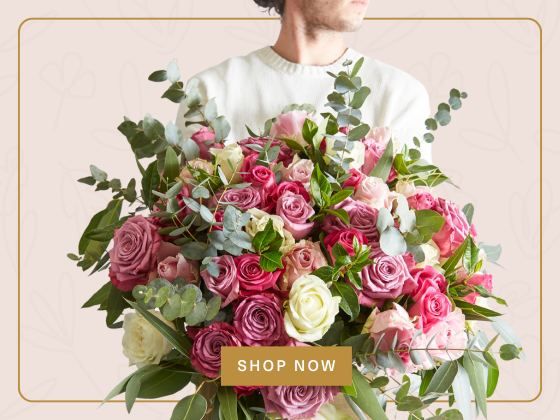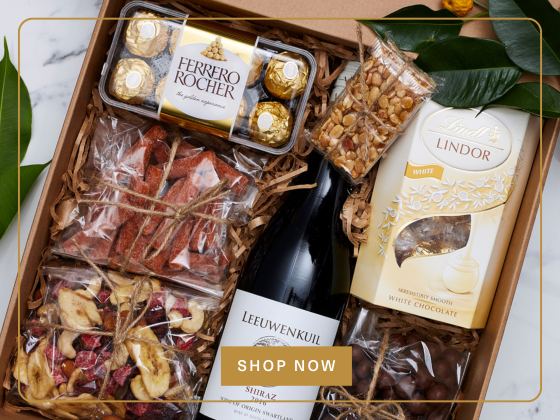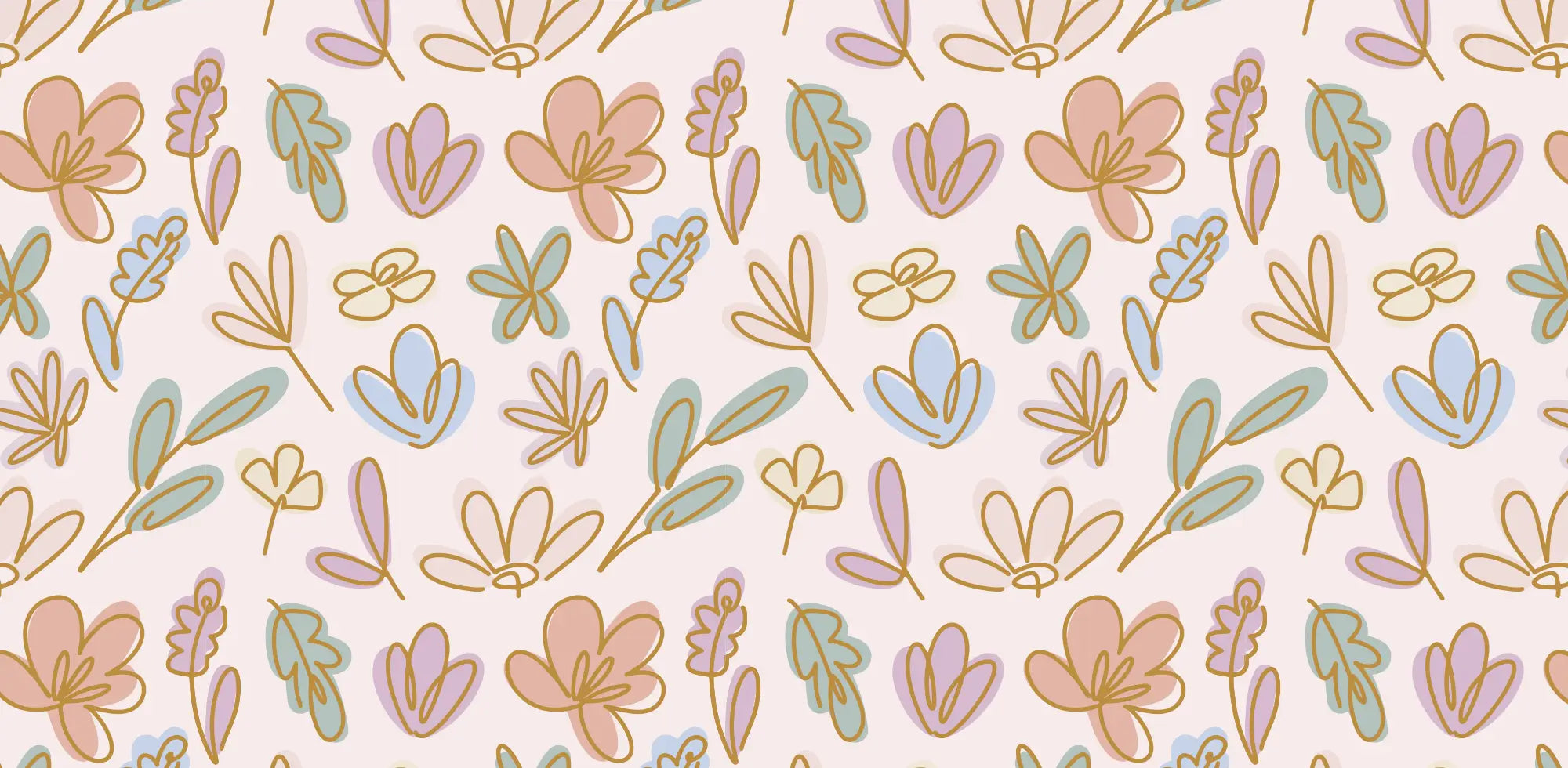Stepping into the world of gardening is like opening a treasure chest of botanical wonders. With over 400,000 flowering plant species globally, the choices can be both thrilling and overwhelming. Whether you’re dreaming of a cottage garden bursting with cheerful blooms or an elegant display of sophisticated flowers, understanding the magnificent diversity of flower species will transform your outdoor space into a personal paradise. Attractive flowers and ornamental plants are essential for creating visually stunning gardens, adding both colour and elegance to any landscape.
In this blooming guide, we’ll explore the most enchanting flower species for your garden—from the first snowdrops of early spring to the resilient asters of early fall. Many of these are popular garden plants, celebrated for their beauty and versatility. Prepare to fall head over heels for these botanical beauties as we uncover their secrets, celebrate their charms, and help you create a garden that’s positively fabulous.

Introduction to Flowering Plants: Top 50 Flower Species
Flowering plants (scientifically known as angiosperms) are nature’s most spectacular success story. These beautiful flowering plants emerged about 125 million years ago and have since painted our world with extraordinary diversity. From tiny alpine blooms to towering tropical trees, these plant species have conquered nearly every habitat on Earth.
What makes flowering plants so special? Unlike their prehistoric predecessors, they produce flowers—those magical reproductive structures that have evolved into countless forms to attract specific pollinators. When flowers bloom, they transform landscapes and lift spirits, which explains our enduring love affair with these botanical marvels.
In gardens, flowering plants typically fall into three main categories:
-
Annuals: Complete their entire life cycle in one growing season, often delivering non-stop vibrant blooms until frost
-
Biennials: Take two years to complete their life cycle, typically forming leaves in year one and flowering in year two
-
Perennials: Return year after year, with perennial flowering plants often increasing in size and splendour with time
Many of these are grown as ornamental plants, valued for their beauty, decorative appeal, and the wide variety of flower types, colours, and forms they offer in gardens and landscapes.
Understanding when different types of flowers make their grand appearance helps create gardens with year-round interest. From early spring bloomers like crocuses and daffodils to late spring beauties like peonies, from early summer stars like roses to early fall champions like chrysanthemums—timing is everything in the flower world. Flowers vary not only in their blooming times but also in their colours and forms, adding diversity and visual interest throughout the seasons.
Get to know the wonderful world of Fabulous Flowers: shop Delphinium | Shop All Flowers | Flower Shop | Flowers by Type | Florist | Flowers Price | Gerbera Daisies | Lilies | Lisianthus | Orchids | Peonies | Protea Flower | Red Roses | Rose | St Joseph Lily | Stargazer Lily | Sunflowers | Tulips | Pink Flowers | Purple Flowers | Red Flower Bouquet | White Rose Bouquets
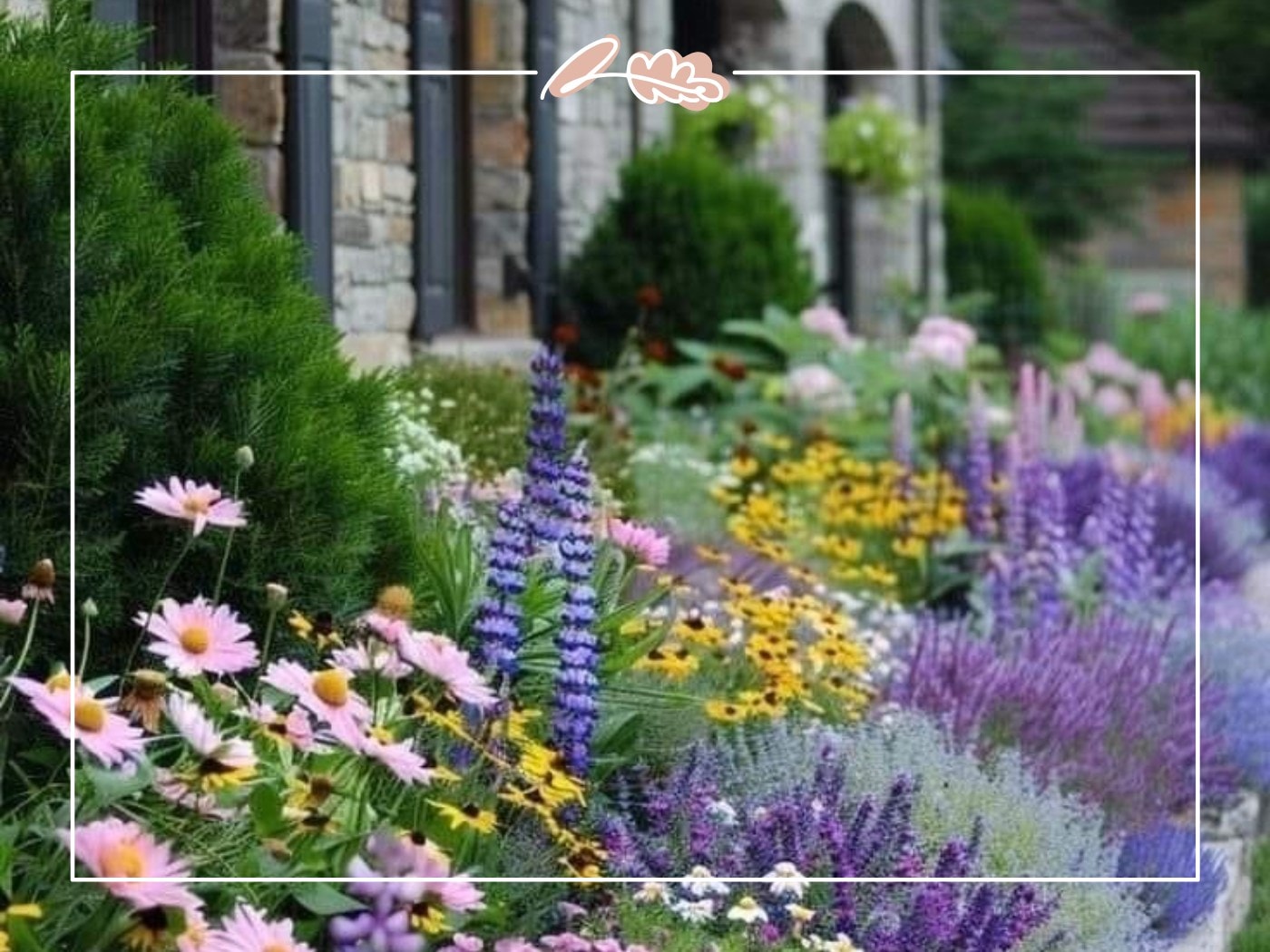
Types of Flowers: Top 50 Flower Species
The dazzling diversity of flower types offers endless possibilities for creating gardens that delight through every season. Ornamental flowers and ornamental plants are specifically chosen for their decorative appeal, enhancing the overall aesthetics and visual interest of any garden space. Each type of flower brings its own personality, growing habits, and care requirements to your garden party.
By Life Cycle
Annuals deliver maximum impact with minimal waiting. These botanical overachievers grow, flower, set seed, and complete their entire life cycle in a single season. Think cosmos with their airy grace, zinnias with their long vase life, or sunflowers with their cheerful faces. Annuals typically offer the longest blooming period, making them perfect for those who crave constant colour.
Biennials play the long game, spending their first year growing foliage and their second year producing exquisite flowers before bidding farewell. Foxgloves with their speckled bell shaped flowers and hollyhocks with their towering spires exemplify this patient approach to beauty.
Perennials are the garden gifts that keep on giving. These faithful friends return year after year, often expanding their territory and increasing their floral display. From the romantic peonies of late spring to the daisy flowers of summer, perennial plants form the backbone of established gardens. While individual blooms may last just days, the plants themselves can grace your garden for decades.
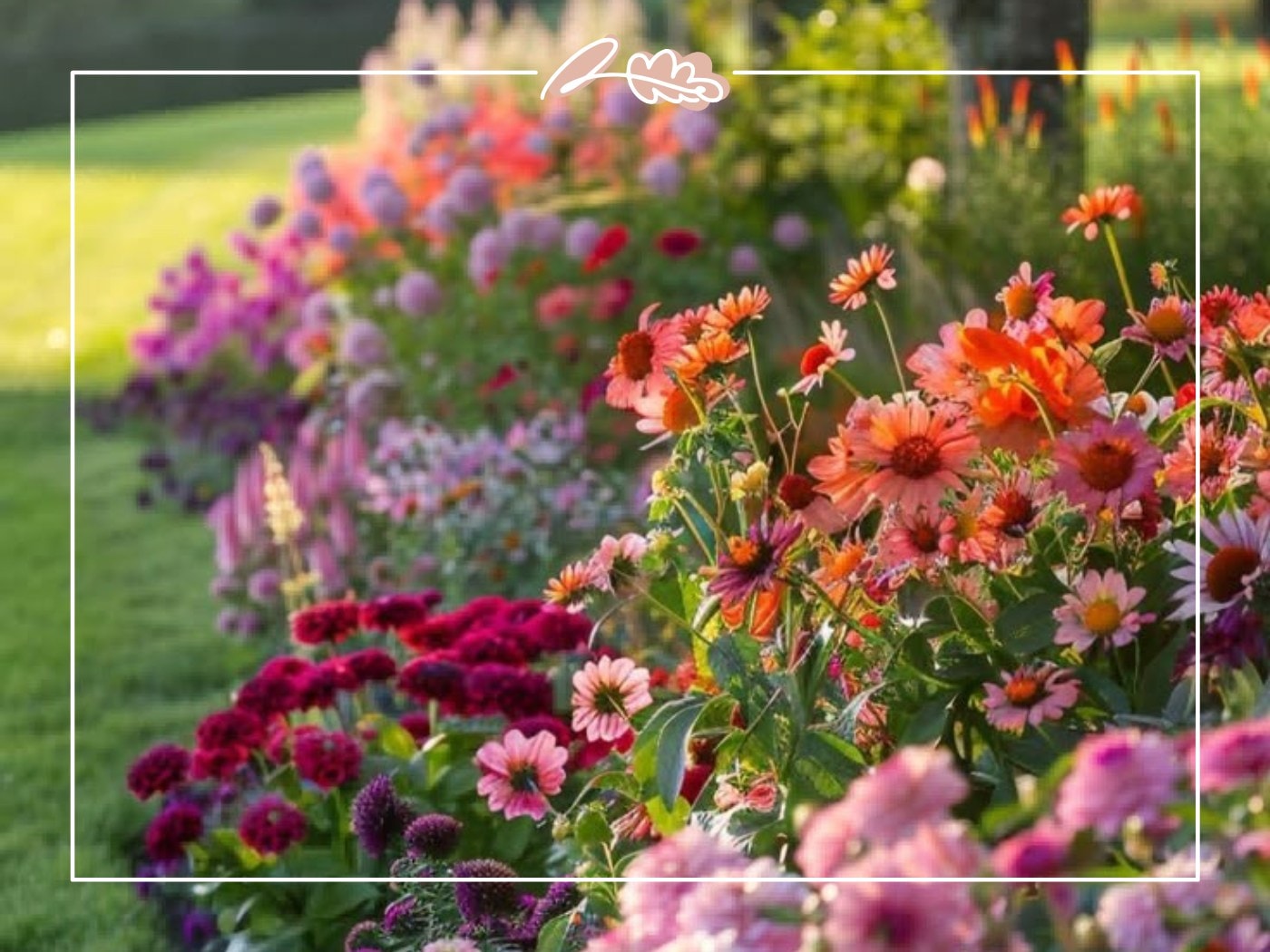
By Flower Structure
The architecture of flowers is endlessly fascinating, with forms evolved to attract specific pollinators or adapt to particular environments:
Simple Flowers feature all the classic flower parts arranged in predictable patterns. Think of a lily’s elegant structure or a rose’s perfect symmetry—these are often considered elegant flowers prized for their refined beauty.
Composite Flowers are actually clusters of tiny flowers working together to create what appears to be a single bloom. Sunflowers with their dark centres ringed by golden yellow petals are a perfect example—each “petal” is actually a complete flower!
Inflorescences showcase flowers arranged in specific patterns: spikes (like lavender), umbels (like dill), panicles (like lilacs), or corymbs (like yarrow). These complex arrangements create stunning architectural elements in the garden. Some inflorescences produce stunning flowers that serve as focal points in garden design.
From the trumpet shaped flowers of daffodils and morning glories to the cup shaped flowers of tulips and poppies, from the bowl-like blooms of water lilies to the intricate structures of orchids—each form tells a story of evolutionary adaptation and offers unique garden appeal.

Flower Shapes and Colours in Detail
Bell Shaped Flowers
There’s something utterly enchanting about bell shaped flowers nodding gently in a summer breeze. These delicate flowers have evolved their pendant form for good reason—it protects precious pollen from rain and guides specific pollinators to the nectar within.
Bluebells carpet woodland floors with their nodding azure blooms, bringing a sweet scent and fairytale charm to shady spots. Campanulas, from tiny alpines to statuesque border plants, offer bell-shaped delights in shades from crisp white to deepest purple. Foxgloves create vertical drama with their spotted bells climbing tall spikes—perfect for cottage gardens and woodland edges alike.
The bell shape isn’t just beautiful—it’s brilliant design. Many bell shaped flowers amplify the buzz of pollinating bees, attracting more of these helpful garden visitors. Their downward-facing position also means they continue looking perky even after a summer shower, when more exposed blooms might appear bedraggled.
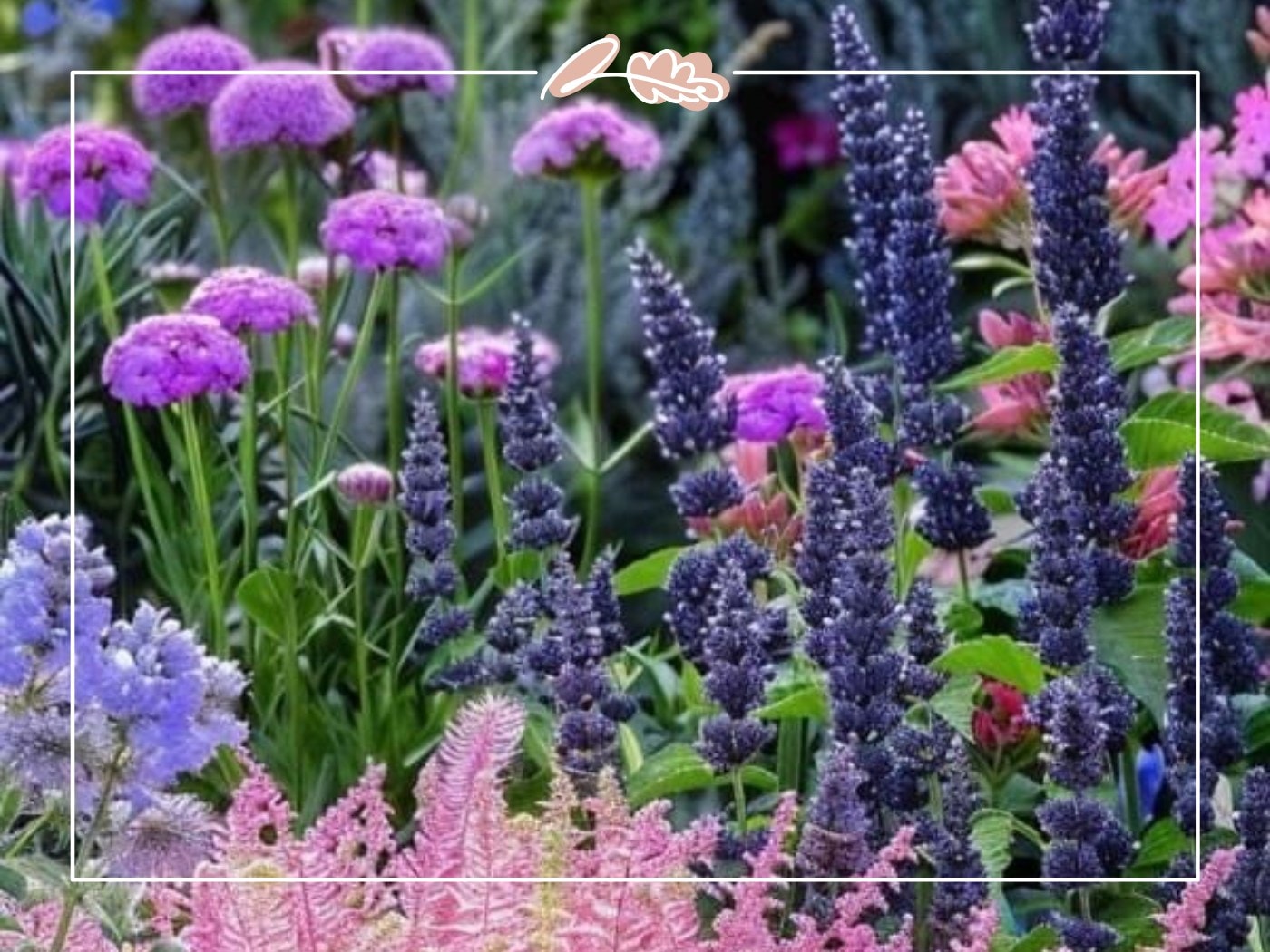
Purple Flowers
Is there anything more regal than purple flowers in the garden? From the palest lavender to the deepest violet, purple blooms add sophistication and mystery to any planting scheme.
Lavender, with its aromatic silver-green foliage and purple flower spikes, doesn’t just look gorgeous—it fills the air with a calming fragrance that both humans and pollinators find irresistible. Alliums create architectural interest with their perfect purple spheres hovering above slender stems like botanical lollipops. Catmint cascades with purple-blue blossoms that keep coming all summer long, despite heat and drought.
Purple flowers create fascinating colour combinations in the garden. Pair them with yellow flowers for dramatic contrast, white flowers for elegant restraint, or pink flowers for romantic harmony. As twilight falls, purple flowers remain visible longer than many other colours, extending your garden’s daily performance into the evening hours.
Discover our range of purple flowers.
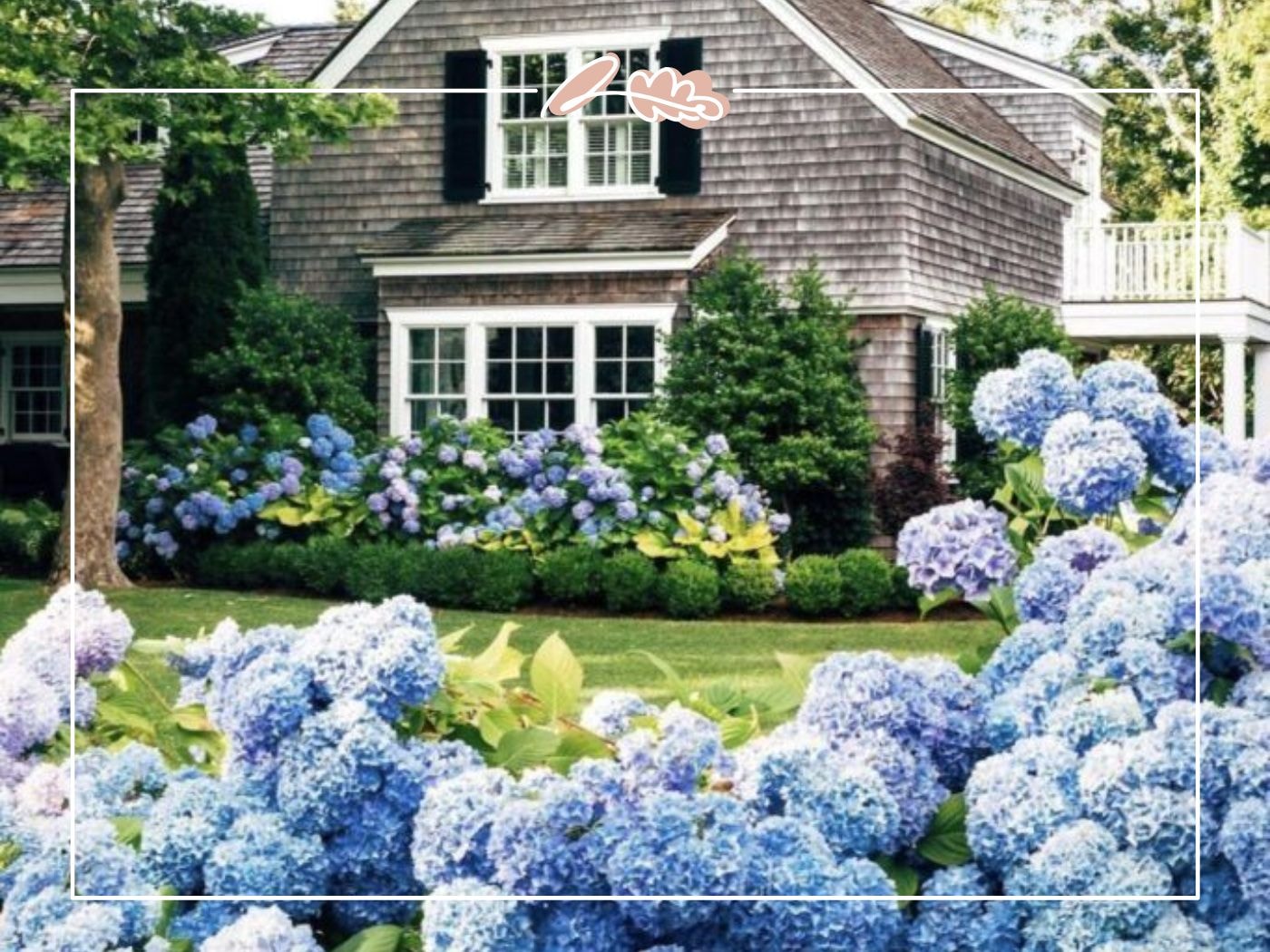
Blue Flowers
True blue is the unicorn of the flower world—rare, magical, and endlessly pursued by gardeners. The scarcity of genuinely blue flowers makes them especially precious in garden design.
Forget-me-nots scatter their tiny true-blue stars with yellow centres through spring gardens, creating a celestial effect among tulips and daffodils. Delphiniums reach for the sky with their towering spires of blue blossoms—from gentle sky blue to the deepest midnight hue. Cornflowers offer the purest blue in the cutting garden, making them invaluable for floral arrangements that pop with cool colour.
The biochemistry behind blue flowers is fascinatingly complex, requiring specific pigments, co-pigments, and precise cellular pH. This complexity explains why blue flowers remain relatively uncommon in nature and why gardeners treasure them so. In garden design, blue flowers create depth and perspective, appearing to recede visually and making spaces feel larger.
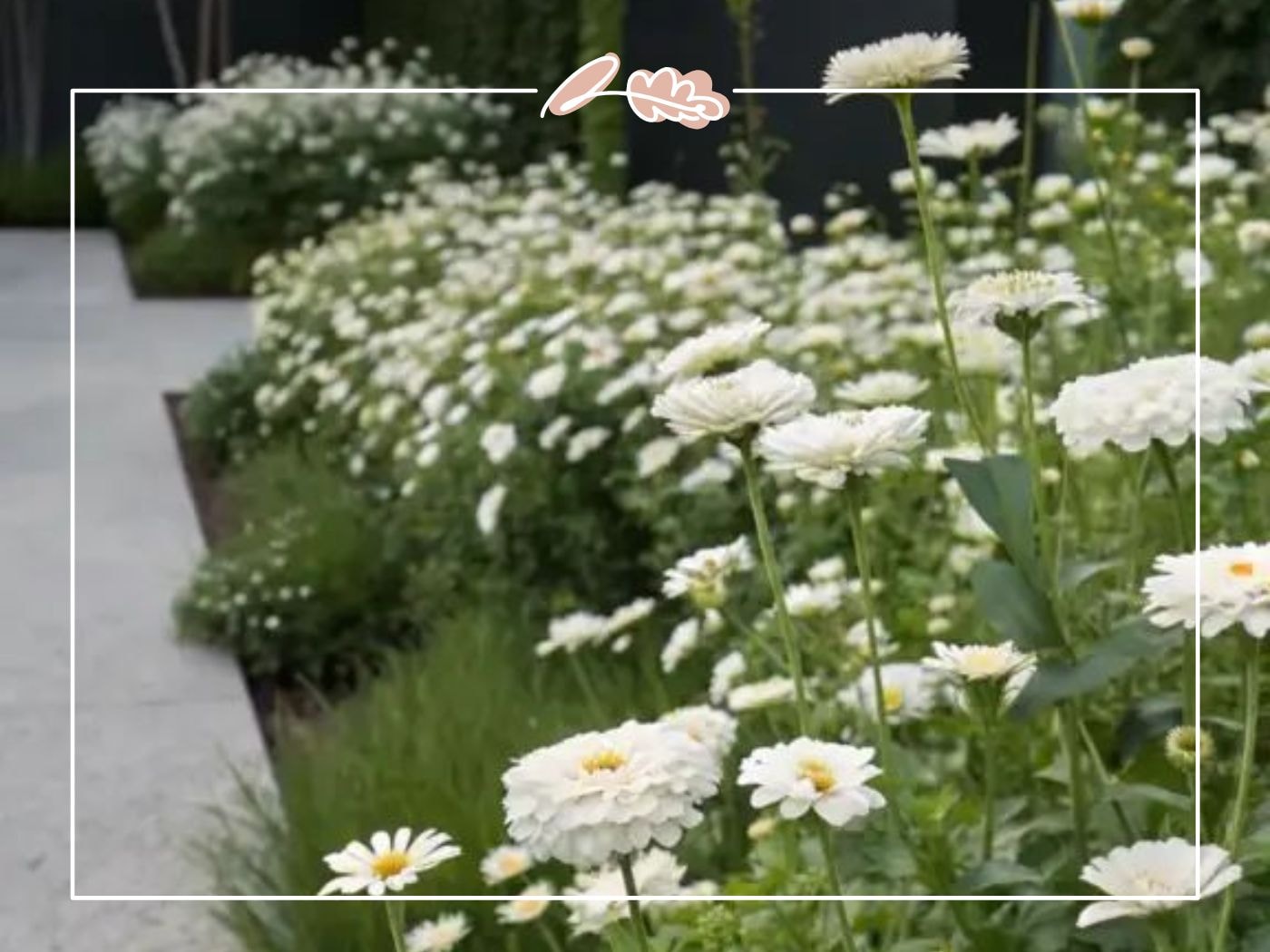
White Flowers
White flowers hold a timeless appeal in the flower world, celebrated for their pure elegance and versatility. These exquisite blooms are a staple in wedding bouquets and floral arrangements, where their understated beauty brings a sense of sophistication and grace to any occasion. Among the most beloved types of flowers in white are calla lilies, with their sculptural, trumpet-shaped blooms that exude modern elegance, and classic roses, whose delicate petals symbolise love and new beginnings. Carnations, too, offer frilly, long-lasting white flowers that are perfect for both formal and casual displays.
The symbolism of white flowers runs deep—they often represent purity, innocence, and fresh starts, making them a meaningful choice for weddings, christenings, and other milestone celebrations. Many white flowers, such as lilies and orchids, are renowned for their strong, sweet scent, filling a room with fragrance and creating a memorable sensory experience.
White flowers are also incredibly versatile in design. They can be paired with colourful flowers for a striking contrast or used alone to create a serene, monochromatic arrangement that radiates calm and elegance. Whether you’re crafting a romantic bouquet or a modern centrepiece, white flowers offer endless possibilities for creativity and style in the garden and beyond.

Star Shaped Flowers
Star shaped flowers bring celestial beauty down to earth with their geometric perfection. This classic flower form appears across numerous plant families, proving that good design never goes out of style.
Clematis spreads its starry petals wide, creating dinner-plate-sized celebrations in colours from pristine white to rich purple. Jasmine fills evening air with intoxicating perfume from its delicate white stars. Borage produces edible blue stars beloved by bees and creative chefs alike.
The star shape allows maximum access for pollinators while creating a visually striking display that stands out in both garden settings and floral arrangements. Many star shaped flowers track the sun throughout the day, turning their faces to catch every ray—a delightful bit of garden choreography.
Fragrant and Unique Flowers
Some flowers captivate not just with their looks, but with their unforgettable fragrance and extraordinary forms. Fragrant flowers like freesia and gardenias are cherished for their sweet, intoxicating scent, making them favorites in perfumes, floral arrangements, and gardens alike. Their aroma can transform any space, inviting you to linger and enjoy the beauty of nature’s own perfume.
Unique flowers, such as orchids and birds of paradise, bring an exotic flair to the garden, boasting shapes and colours rarely seen in more common blooms. Many of these remarkable types of flowers hail from tropical and subtropical regions, where warm, humid climates encourage their vibrant blooms and intricate forms. Jasmine and orange blossoms, with their delicate, bell shaped flowers and enchanting fragrance, are especially prized for their ability to fill the air with a sweet, lingering scent.
These fragrant and unique flowers are not only stunning in appearance, they also offer practical benefits. Their long vase life makes them ideal for flower arrangements, while their alluring scent and unusual shapes add a touch of sophistication to any bouquet. Many of these flowers attract pollinators, supporting a healthy garden ecosystem. Whether you’re seeking to create a show-stopping centrepiece or simply want to enjoy the sweet scent of blooming flowers, these exquisite varieties are sure to delight the senses and elevate your floral designs.
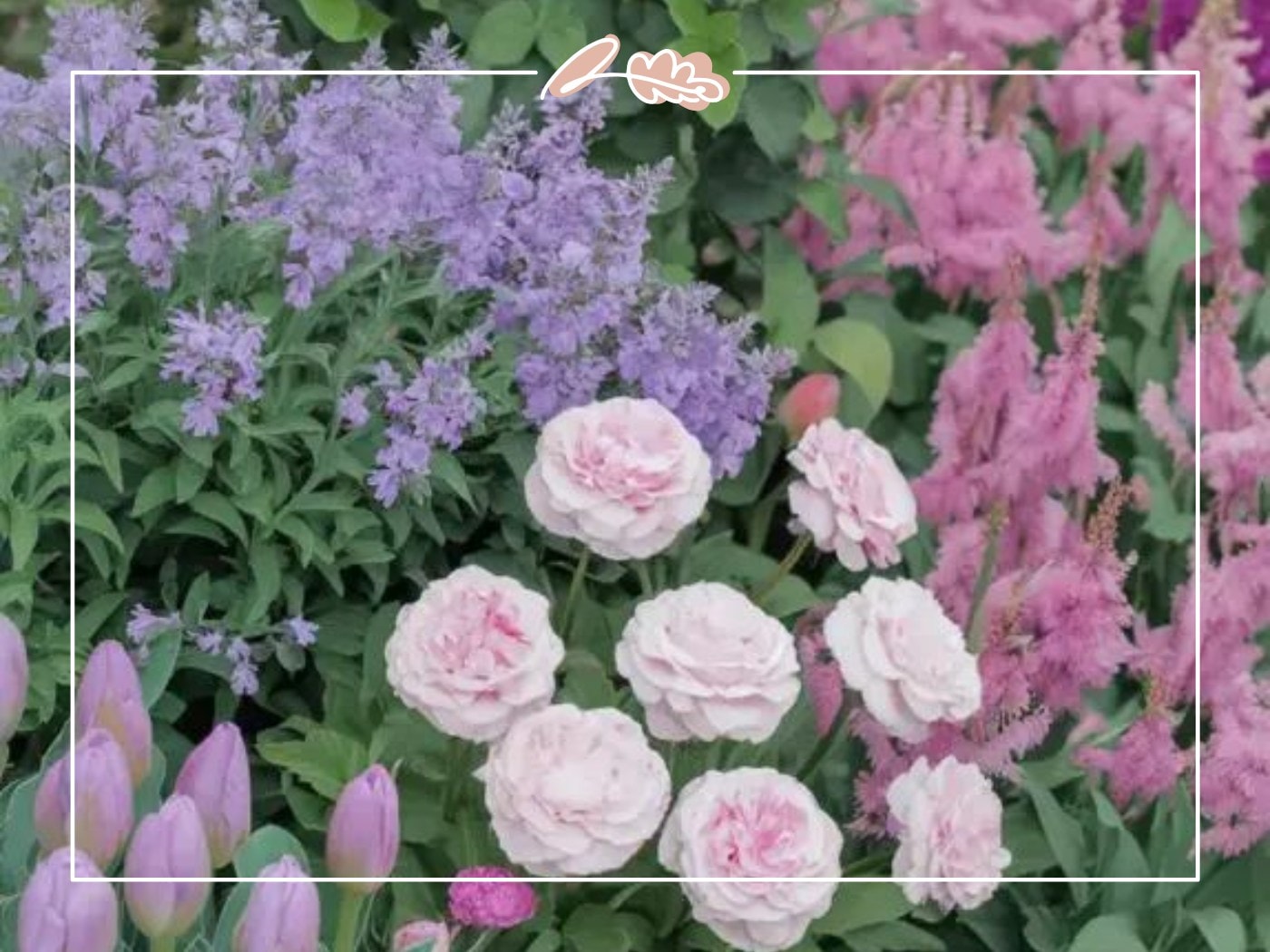
Regional Flowers
California Poppy
The California poppy transforms hillsides into rivers of gold each spring, a spectacle so magnificent it earned this wildflower the title of California’s state flower in 1903. These bright flowers aren’t just pretty faces—they’re botanical survivors perfectly adapted to Mediterranean climate conditions.
With silky cup-shaped blooms in traditional orange or newer shades of yellow, pink, and cream, California poppies bring a touch of sunshine to gardens worldwide. Their blue-green feathery foliage provides textural interest even when the plants aren’t blooming. Being drought tolerant, these resilient beauties thrive in rock gardens and other challenging spots where many flowers would simply give up.
California poppies demonstrate the beauty of going with the flow of seasons. During summer heat, they often go dormant, only to return with the autumn rains—a clever adaptation to their native climate. In the garden, they self-seed gently, creating naturalistic drifts that look as though Mother Nature herself was your landscape designer.
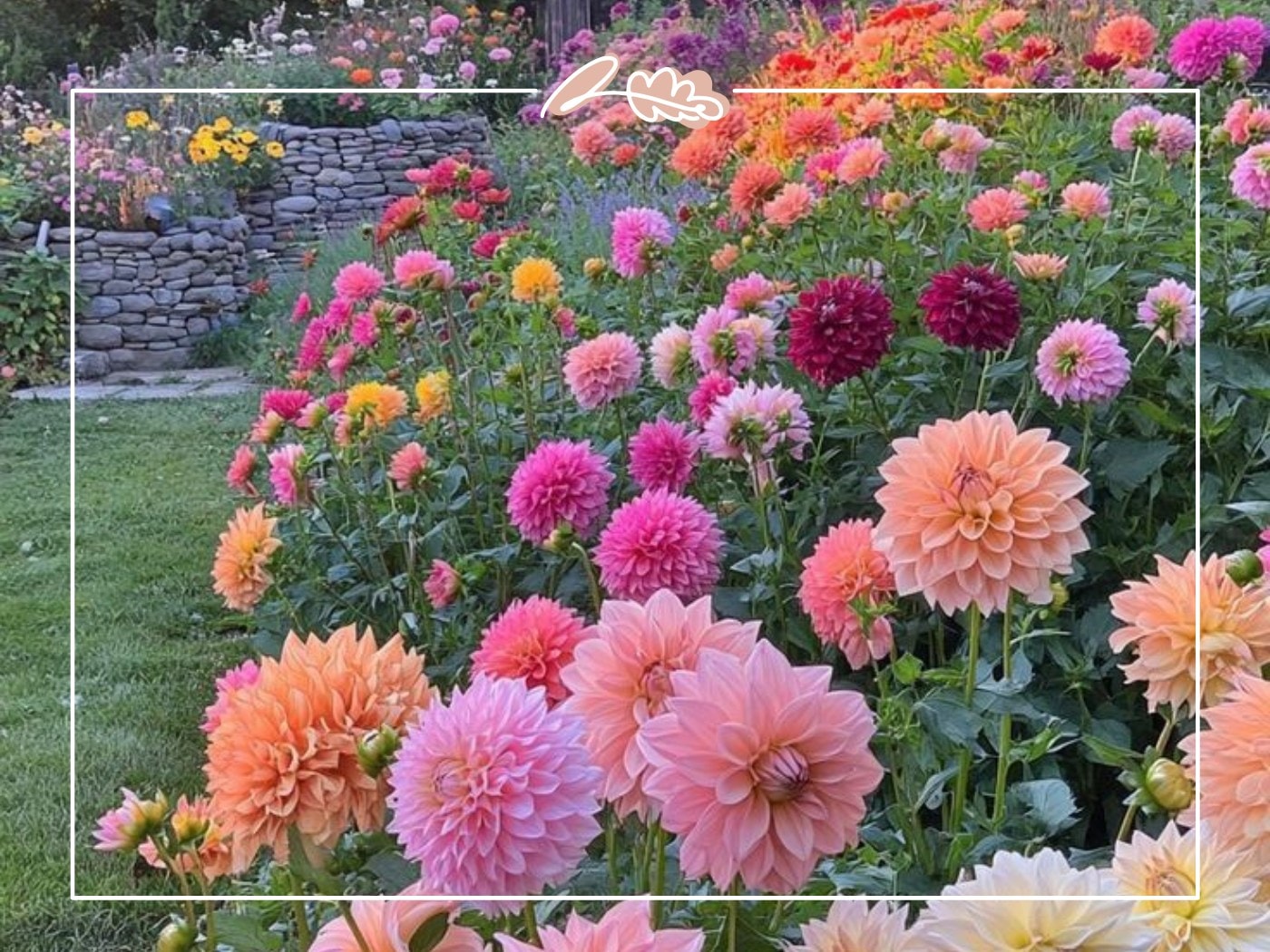
South Africa
South Africa’s Cape region hosts one of the world’s richest floral kingdoms, with a diversity that leaves botanists and gardeners equally awestruck. Native to South Africa, many of these extraordinary plants have become garden stars globally, bringing their unique forms and vibrant colours to gardens far from their homeland.
The protea family offers some of the most architectural flowers on the planet, with complex structures that seem almost otherworldly. Bird of Paradise (Strelitzia) mimics a tropical bird in flight with its orange and indigo blooms—an elegant flower that makes a dramatic statement in both gardens and floral bouquets.
Agapanthus, commonly called African lily, presents perfect spheres of blue or white florets on tall stems above strappy foliage. Gerbera daisy, another South African native, delivers daisy flowers in a rainbow of vibrant blooms with extraordinary long vase life as cut flowers. Clivias offer clusters of trumpet-shaped orange or yellow flowers even in deep shade—a remarkable talent in the flower world.
What makes South Africa’s flowers so special? Millions of years of evolution on nutrient-poor soils and adaptation to fire ecology have created plants with extraordinary resilience and distinctive beauty. Many South African plants have made themselves at home in other Mediterranean climate regions, including California, parts of Australia, and the Mediterranean basin itself.
Read more about South Africa's beautiful flowers. Shop our protea bouquets.
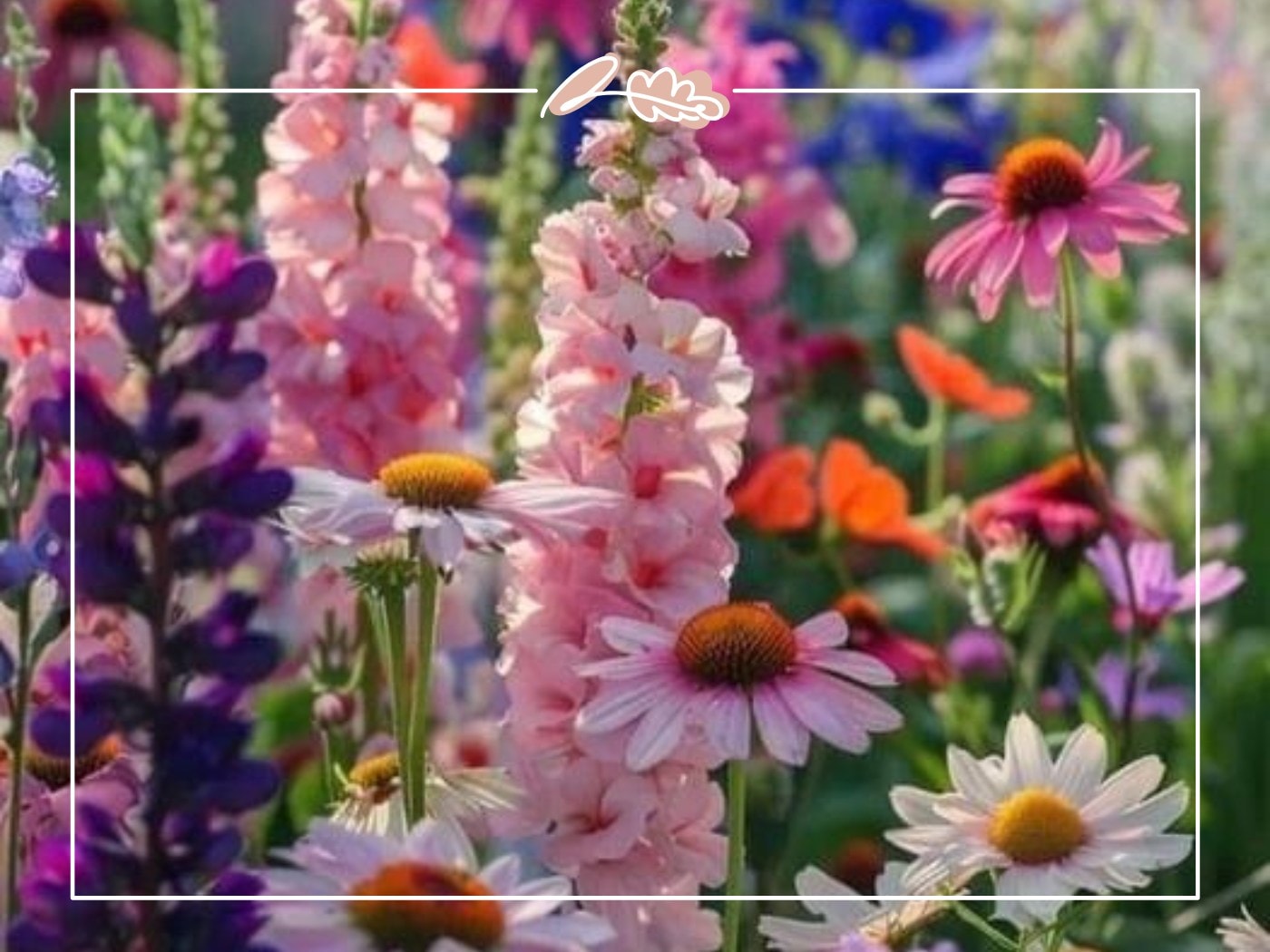
Flower Care and Maintenance
Creating a garden filled with beautiful flowers is one thing—keeping them looking fabulous is another! Some flower species are well-suited for both indoor and outdoor gardens, offering flexibility for gardeners with different spaces. Proper care ensures your botanical beauties deliver maximum impact with minimum drama.
Watering Wisdom
Different flower species have different relationships with water. Some, like roses, appreciate consistent moisture, while others, like lavender, perform best when conditions lean toward the drier side. Generally speaking:
-
Water deeply and less frequently to encourage roots to grow downward
-
Direct water to the soil rather than the foliage to prevent fungal issues
-
Water in the morning to reduce evaporation and allow leaves to dry before evening
-
Consider soaker hoses or drip irrigation for efficient, targeted watering
-
Group plants with similar water needs together in your garden design
Containers and hanging baskets typically need more frequent watering than in-ground plantings, sometimes requiring daily attention during hot weather. The reward? Spectacular vibrant blooms that make every drop worthwhile.
Feeding for Flourishing
Flowering plants transform soil nutrients into botanical magnificence. Help them perform this magic with appropriate fertilisation:
-
Use balanced fertilisers for overall growth and specialised formulations to encourage blooming
-
Apply slow-release fertilisers in spring for season-long nourishment
-
Consider liquid feeds for quick results when plants need a boost
-
Avoid over-fertilising, which can lead to lush foliage at the expense of flowers
-
Organic options like compost tea nourish both plants and soil life
Remember that many native plants and drought-tolerant species actually prefer leaner soil conditions. In their case, excessive fertility can reduce flowering and compromise their natural resilience.
Deadheading and Pruning
One of the most rewarding garden tasks is deadheading—removing spent blooms to encourage plants to produce more flowers rather than setting seed. This simple practice can extend the blooming season of many perennial plants and annuals by weeks or even months.
Different types of flowers benefit from different pruning approaches:
-
Spring-flowering shrubs like lilacs should be pruned immediately after flowering
-
Summer and fall bloomers like butterfly bush are typically pruned in early spring
-
Roses have specific pruning requirements based on their type (hybrid tea, climbing, shrub)
-
Some perennials benefit from the “Chelsea chop”—cutting back by one-third in late spring to delay and extend flowering
For plants grown primarily for their showy flowers, strategic pruning can make the difference between an adequate display and a truly spectacular one.
Seasonal Considerations
Gardens dance through the seasons, and your care routine should follow their lead:
Spring: As early spring bulbs emerge, apply slow-release fertiliser, divide overcrowded perennials, and prepare for the growing season ahead. Watch for emerging pests and address them early.
Summer: Keep up with watering during dry spells, deadhead regularly to promote continued flowering, and provide support for tall bloomers before they need it.
Autumn/Fall: Plant spring-flowering bulbs, divide summer-blooming perennials, reduce fertilisation, and begin preparing tender plants for winter.
Winter: Protect vulnerable plants from freezing temperatures, plan next year’s display, and enjoy the architectural qualities of seedheads and ornamental grasses in the winter garden.
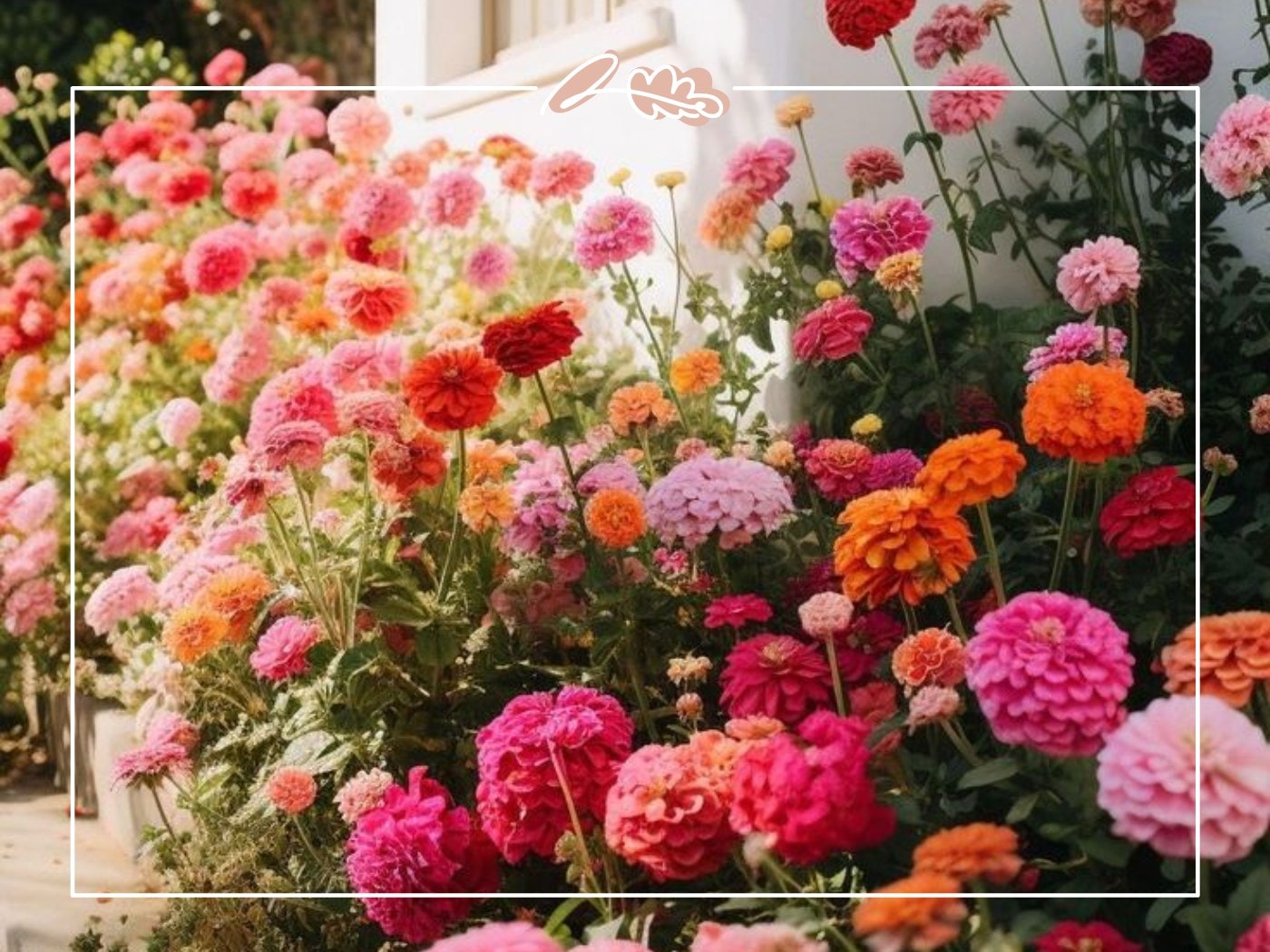
Top 50 Flower Species for Garden Glory
Let’s explore fifty fabulous flower species that deserve a place in your garden. Each offers its own unique charm and personality. From timeless classics to underappreciated gems, these plants will transform your outdoor space into a living masterpiece.
Spring-Flowering Bulbs
-
Tulips (Tulipa spp.) These iconic spring bloomers offer cup-shaped flowers in virtually every colour imaginable. From the elegant simplicity of single tulips to the lush petals of doubles that resemble peonies, these spring stars bring joy after winter’s gloom.
-
Daffodils (Narcissus spp.) With their cheerful yellow or white trumpet-shaped flowers, daffodils naturalise beautifully and return reliably year after year. Best of all, squirrels and deer leave them alone!
-
Hyacinths (Hyacinthus orientalis) Few flowers offer the intoxicating sweet scent of hyacinths. Their tightly packed florets create colourful spikes in purple, pink, pale pink, blue, white, and yellow. Try them in containers near seating areas to enjoy their fragrance up close.
-
Amaryllis Flower (Hippeastrum spp.) The amaryllis flower is a popular and festive plant, especially during the holiday season. Known for its vibrant colours and large, showy blooms, it holds symbolic significance at Christmas and adds a cheerful touch to winter decor.
-
Crocus (Crocus spp.) Among the first flowers to bloom in early spring, sometimes even pushing through late snow, these small flowers in purple, yellow, and white bring hope that warmer days are coming.
-
Alliums (Allium spp.) Ornamental onions create perfect spheres of tiny star-shaped florets on tall stems, adding architectural interest to late spring gardens. Purple varieties are most common, but white, yellow, and pink options expand the palette.
Spring-Flowering Perennials
-
Peonies (Paeonia spp.) With their sumptuous blooms and rich history spanning thousands of years, peonies are the royalty of the spring garden. Their fragrant flowers in white, pink, and red have extraordinary vase life as cut flowers.
-
Bleeding Heart (Dicentra spectabilis) Arching stems carry heart-shaped pink and white blooms in perfect formation—a romantic addition to woodland gardens and shady borders.
-
Columbine (Aquilegia spp.) Delicate yet tough, columbines offer uniquely spurred flowers that dance above ferny foliage. These cottage garden classics self-seed gently, creating naturalistic drifts.
-
Bearded Iris (Iris germanica) Members of the iris family, these May-blooming beauties feature ruffled falls and upright standards in an astonishing colour range. Their sword-like foliage provides structural interest even when not in bloom.
-
Lupines (Lupinus spp.) Tall spires of pea-like flowers in blues, purples, pinks, and whites create vertical drama in late spring gardens. Their palmate leaves add textural interest throughout the growing season.
-
Begonia (Begonia spp.) A beautiful flowering plant with a rich history, Begonia is prized for its ornamental value and versatility. It thrives in hanging baskets, flower beds, and pots, making it a popular choice for adding vibrant colour to a variety of garden settings.
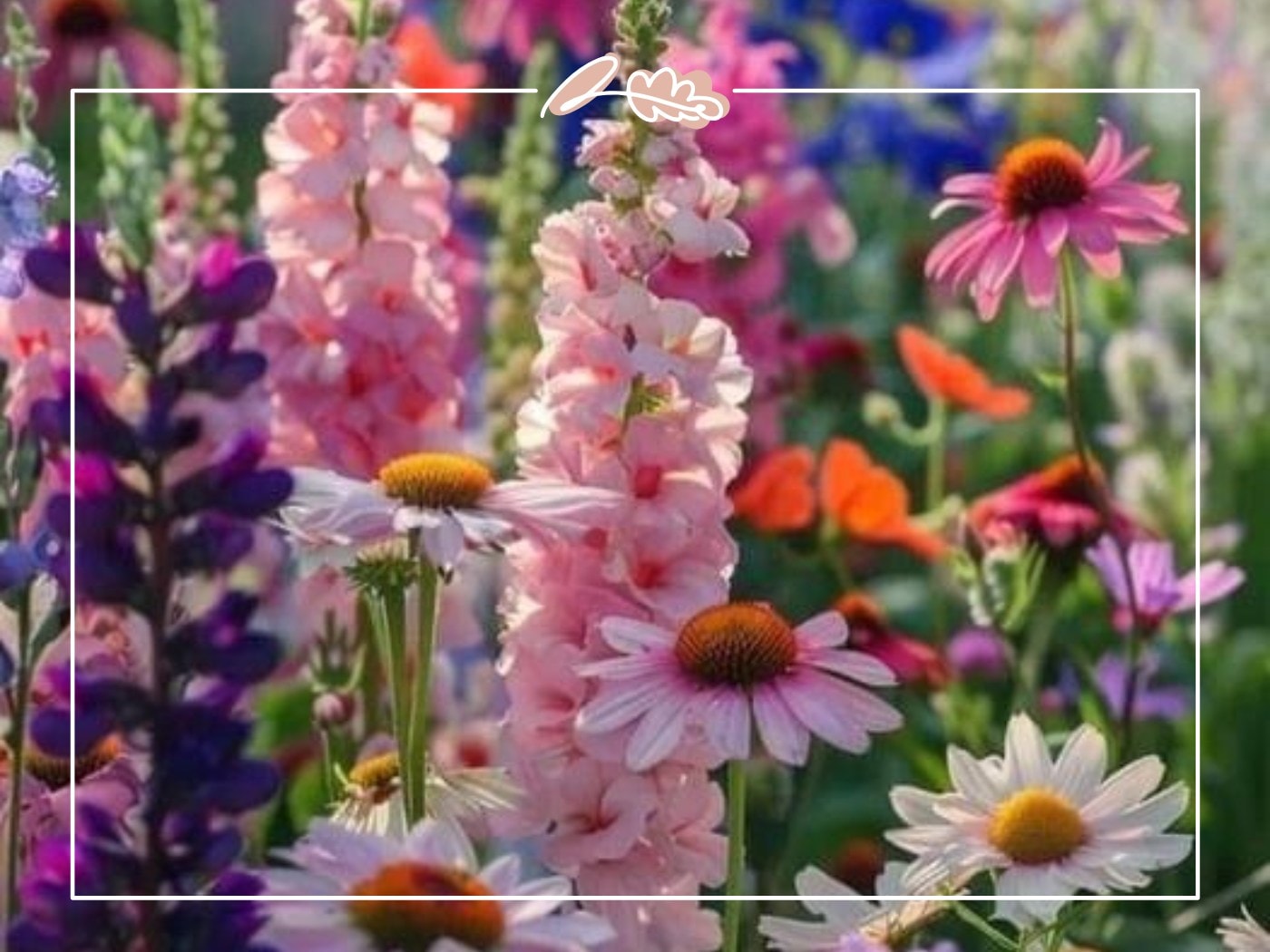
Summer-Flowering Perennials
-
Daylilies (Hemerocallis spp.) These summer workhorses produce trumpet-shaped blooms in nearly every colour except true blue. Though each flower lasts but a day (hence the name), established plants produce dozens of buds for weeks of display.
-
Lavender (Lavandula spp.) Beyond its famous fragrance, lavender offers silver-green foliage and purple flower spikes that attract bees and butterflies. Drought tolerant and deer-resistant, it’s as practical as it is beautiful.
-
Coneflowers (Echinacea spp.) Native to North America, these daisy-like flowers with raised central cones bloom reliably through summer heat. Their vibrant flowers attract pollinators and enhance garden aesthetics. Beyond the classic purple, newer varieties offer white, yellow, orange, and red options.
-
Black-eyed Susan (Rudbeckia hirta) With their golden yellow petals surrounding dark centres, these native North American wildflowers bring sunshine to the garden from midsummer into fall.
-
Phlox (Phlox paniculata) Clusters of star shaped, vibrant flowers in white, pink, purple, and red top these summer classics. These vibrant flowers attract pollinators and enhance the visual appeal of any garden. Their sweet scent intensifies in evening, perfuming the garden as you enjoy twilight outdoors.
-
Cosmos (Cosmos bipinnatus). These annuals produce daisy-like, cheerful flowers in shades of pink, white, and magenta, adding joy and energy to gardens all summer long.
-
Marigolds (Tagetes spp.) Known for their bright orange and yellow hues, marigolds are cheerful flowers that bring warmth and positivity, infusing gardens with energy and happiness.
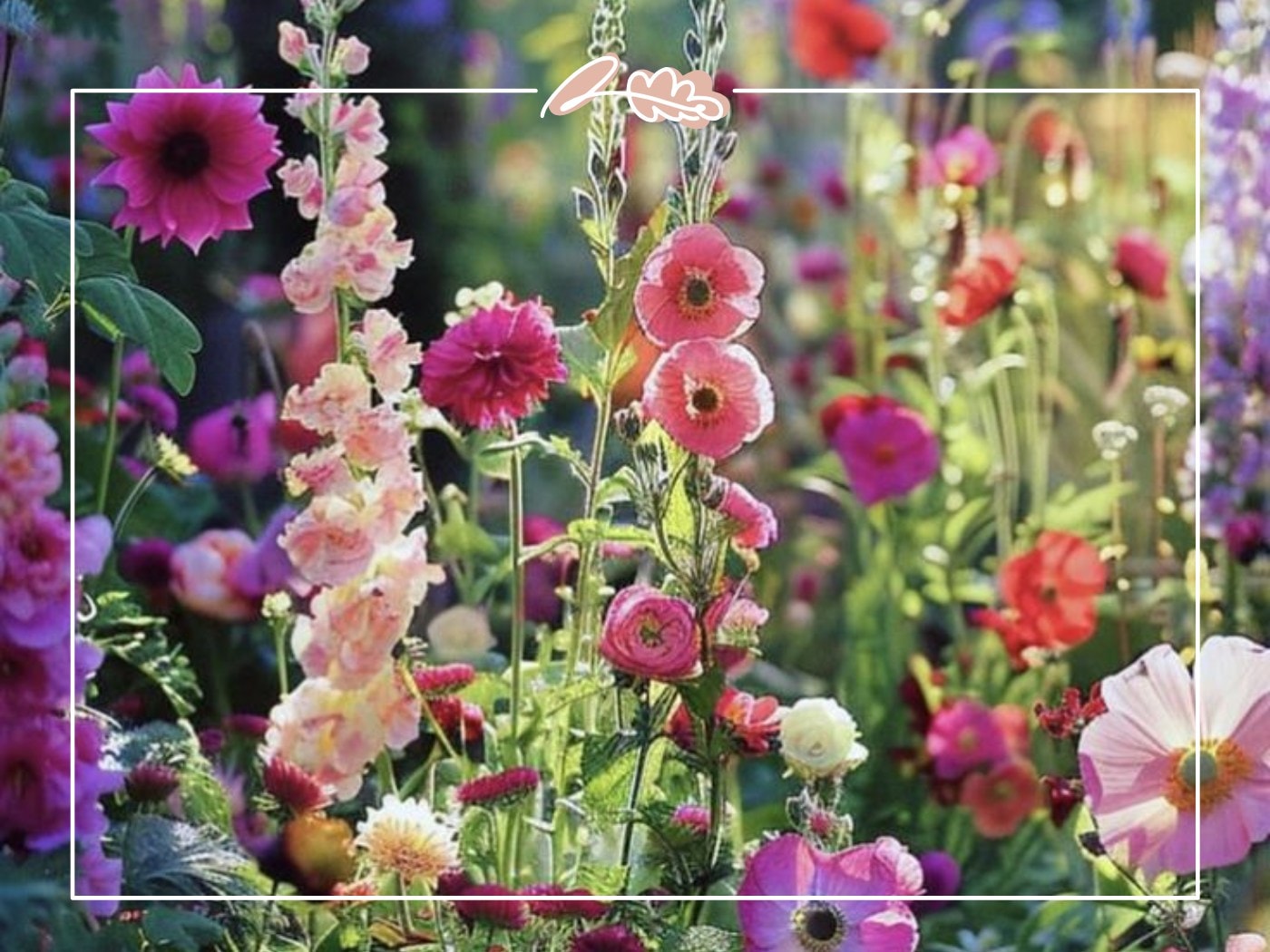
Summer-Flowering Bulbs and Tubers
-
Dahlias (Dahlia spp.) From tiny pompoms to dinner-plate-sized blooms, dahlias offer extraordinary diversity in form and colour. These Mexican natives produce brightly colored flowers from midsummer until frost, making them stand out in gardens and floral arrangements.
-
Gladiolus (Gladiolus spp.) Sword-like stems carry multiple florets that open sequentially from bottom to top, extending the display. These cut flower favourites come in a rainbow of colours and feature brightly colored flowers that add visual appeal to any garden scheme.
-
Lilies (Lilium spp.) Stately and sophisticated, true lilies grow from bulbs and produce trumpet shaped flowers or downward-facing blooms atop tall stems. Many offer intoxicating fragrance along with their elegant form.
-
Calla Lilies (Zantedeschia spp.) Not true lilies but equally elegant, calla lily plants feature sculptural blooms in white, yellow, pink, purple, and nearly black. Their glossy, arrow-shaped leaves add tropical flair to garden or container.
-
Tuberous Begonias (Begonia tuberhybrida) Perfect for shady spots, these show-stoppers produce attractive flowers with rose-like blooms in vibrant colors atop succulent stems. Their frilly flowers in bright red, orange, yellow, or pink light up areas where sun-loving plants struggle, making them highly valued for their ornamental appeal.
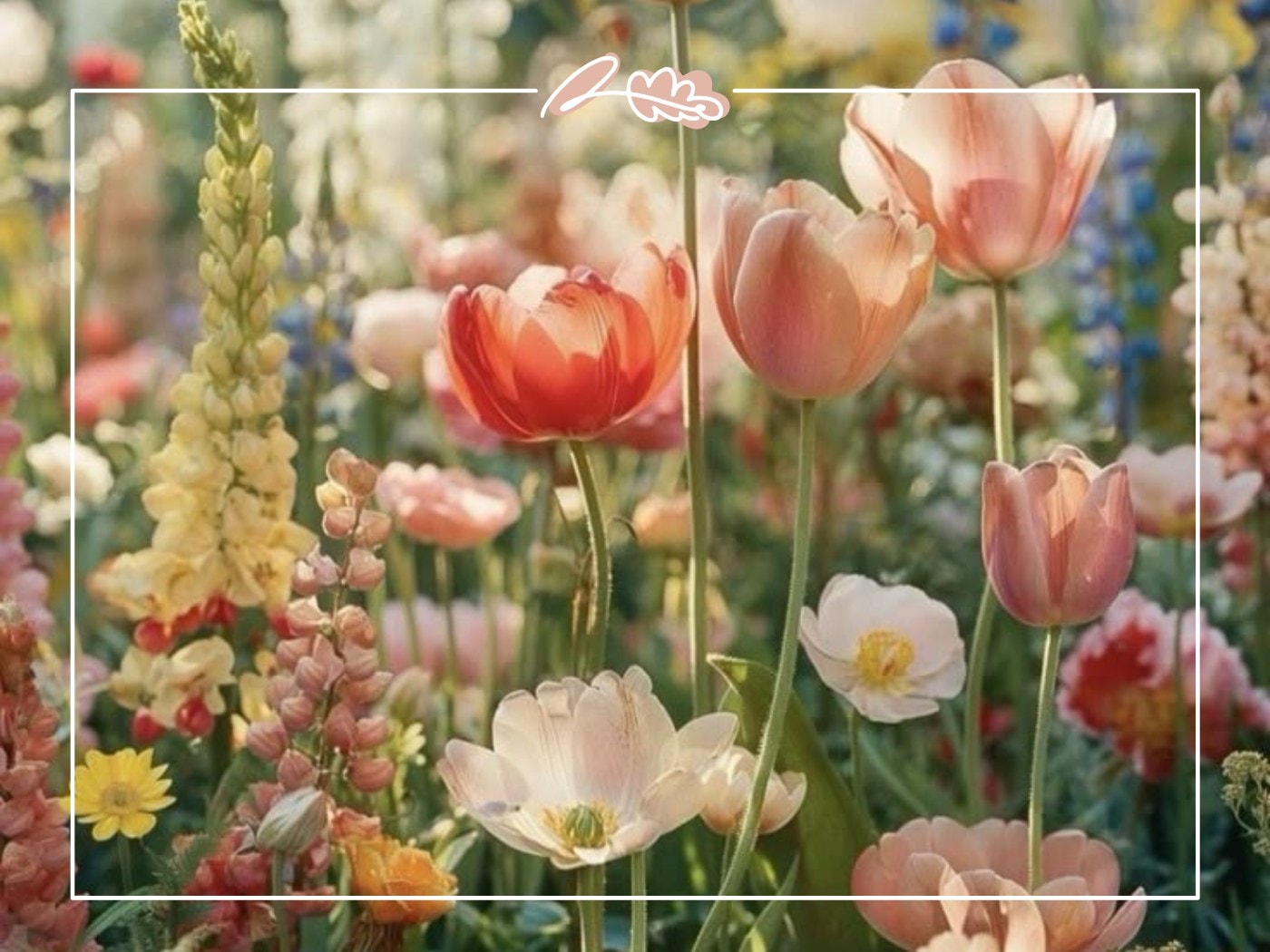
Fall-Flowering Perennials
-
Asters (Symphyotrichum spp.) These late-season stars produce masses of daisy-like blooms in purple, pink, blue, and white. Native varieties support pollinators when many other flowers have finished blooming.
-
Chrysanthemums (Chrysanthemum spp.) The classic flowers of autumn, “mums” offer button to dinner-plate sized blooms in nearly every color except blue. Their rich history spans centuries and continents.
-
Sedum (Sedum spectabile) Succulent foliage supports flat-topped clusters of tiny star shaped flowers that transition from pink to rusty red. These drought-tolerant perennials provide winter interest long after their summer bloom.
-
Japanese Anemone (Anemone hupehensis) Graceful and refined, these late bloomers produce poppy-like flowers on tall, wiry stems. Their ability to thrive in partial shade makes them valuable for woodland garden edges.
-
Goldenrod (Solidago spp.) Often unfairly blamed for seasonal allergies (the real culprit is usually ragweed), goldenrod produces fountains of bright yellow flowers that support late-season pollinators and add sunshine to the autumn landscape.
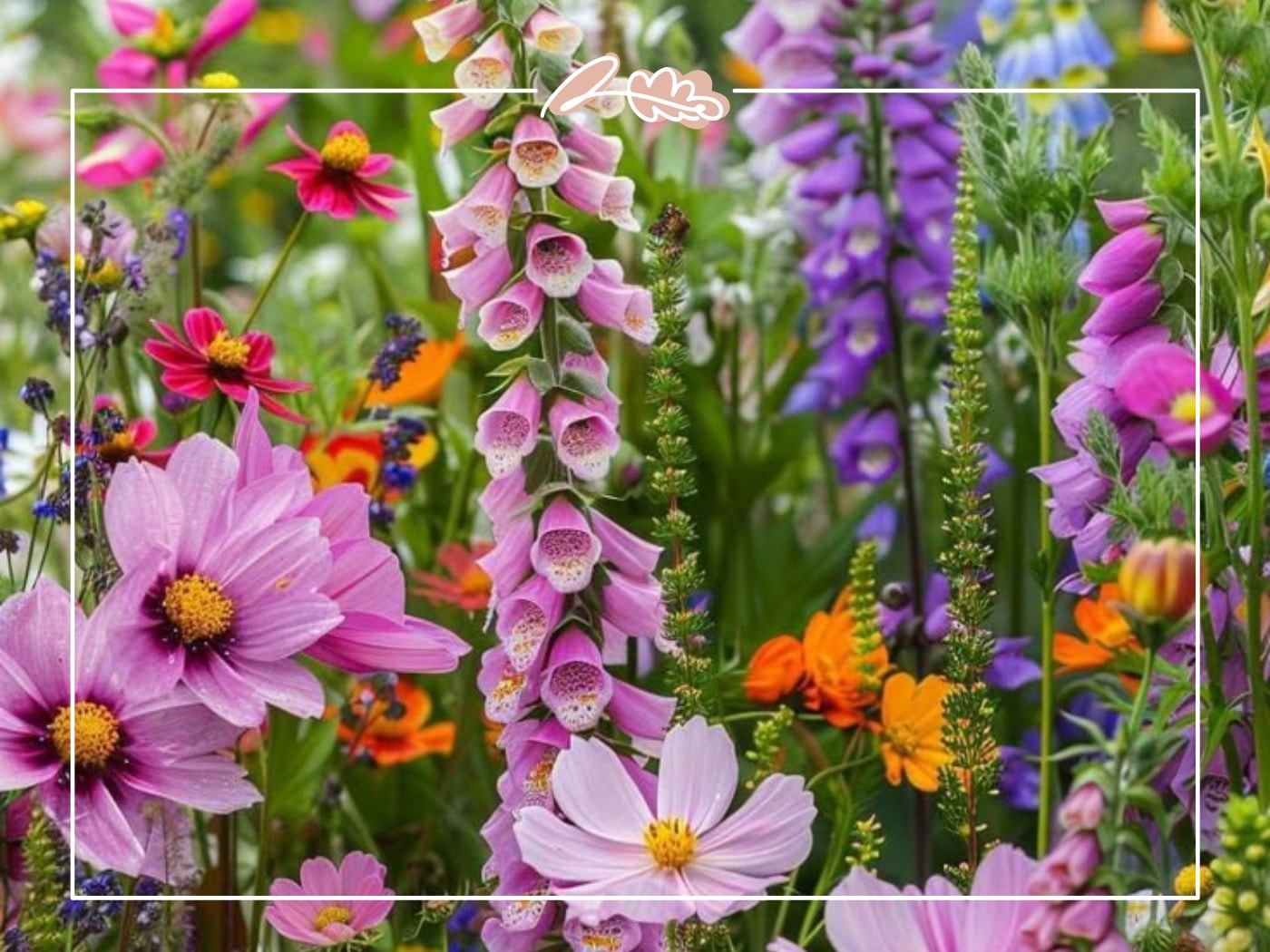
Annuals for Season-Long Colour
-
Zinnias (Zinnia elegans) Few annuals offer the non-stop color, heat tolerance, and cut flower potential of zinnias. As popular garden plants, they are favored for their ease of growth and vibrant display. Available in every colour except blue, they attract butterflies and bloom until frost.
-
Sunflowers (Helianthus annuus) From dwarf varieties suitable for containers to giants reaching 12 feet, sunflowers bring joy with their bright yellow flowers and edible seeds. They make spectacular cut flowers with long vase life.
-
Sweet Peas (Lathyrus odoratus) Climbing vines produce waves of butterfly-like, sweet flowers with an appealing fragrance in pastels and jewel tones. Their intoxicating scent has inspired perfumers and poets alike.
-
Cosmos (Cosmos bipinnatus) Airy and elegant, cosmos produce daisy-like blooms on tall stems above ferny foliage. These easy-growing annuals attract pollinators and make excellent cut flowers.
-
Marigolds (Tagetes spp.) From tiny French varieties to robust African types, marigolds are popular garden plants known for their ease of growth and vibrant, golden yellow, orange, and russet blooms that keep coming all season. Their distinctive scent may help deter certain garden pests.
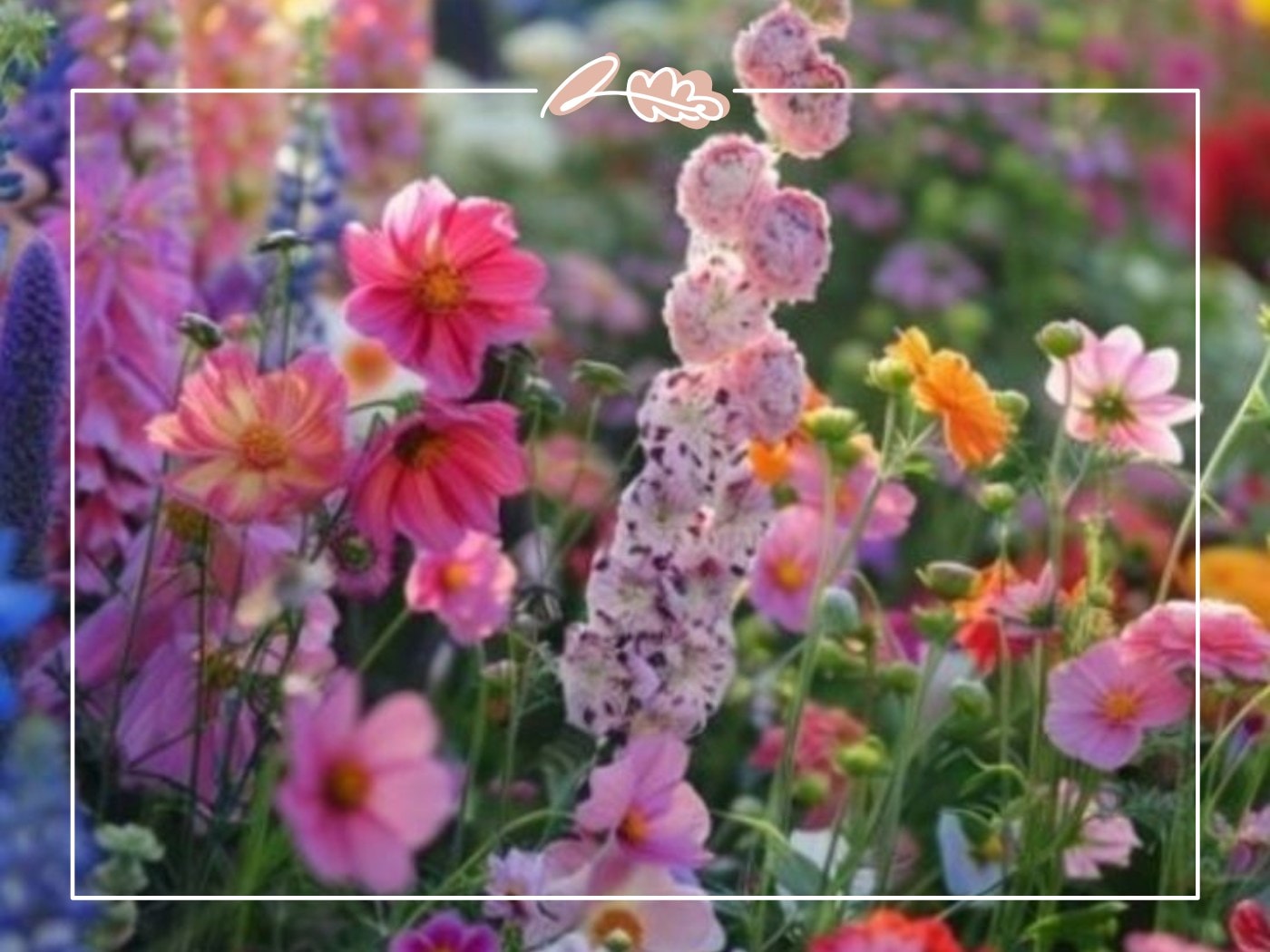
Flowering Shrubs
-
Roses (Rosa spp.) The undisputed queens of the garden, roses offer unparalleled diversity in form, fragrance, and color. Modern varieties combine classic beauty with improved disease resistance and longer blooming periods.
-
Hydrangeas (Hydrangea spp.) Few shrubs offer the show-stopping flower heads of hydrangeas. Depending on type, they produce mophead, lacecap, or panicle blooms in colours from white to pink, blue, and even lime green.
-
Lilacs (Syringa vulgaris) The sweet scent of lilacs in late spring is the stuff of garden legend. These long-lived shrubs produce conical clusters of fragrant flowers in purple, white, pink, and even yellow.
-
Butterfly Bush (Buddleja davidii) Long panicles of tiny fragrant flowers attract butterflies in droves. Choose from purple, pink, white, or blue varieties, and deadhead regularly to promote continuous bloom from summer into fall.
-
Camellias (Camellia japonica, C. sasanqua) These elegant shrubs with shiny dark green leaves produce stunning flowers that bloom in winter or early spring. Their perfect rose-like blooms in white, pink, and red appear when little else is flowering. Fall-blooming sasanquas and winter/spring-blooming japonicas extend the garden’s season.

Flowering Climbers
-
Clematis (Clematis spp.) The “queen of climbers” offers flowers from tiny bells to dinner-plate sized stars in virtually every color. Different types bloom in spring, summer, or fall, allowing for continuous display.
-
Climbing Roses (Rosa climbers and ramblers) From vigorous ramblers that can scale trees to more mannerly climbers perfect for trellises, climbing roses bring the queen of flowers to vertical spaces.
-
Honeysuckle (Lonicera spp.) Tubular, often bicolored fragrant flowers attract hummingbirds while perfuming the garden with sweet scent. Choose non-invasive varieties for responsible gardening.
-
Morning Glory (Ipomoea purpurea) True to their name, these annual vines unfurl fresh trumpet shaped flowers each morning in shades of blue, purple, pink, and white. They quickly cover trellises, fences, or arbours with heart-shaped leaves and cheerful blooms.
-
Wisteria (Wisteria spp.) Few sights match the romance of wisteria’s pendulous racemes of fragrant flowers draped from pergolas or arbours. Patient gardeners are rewarded with a spring spectacle in lavender, purple, white, or pink.
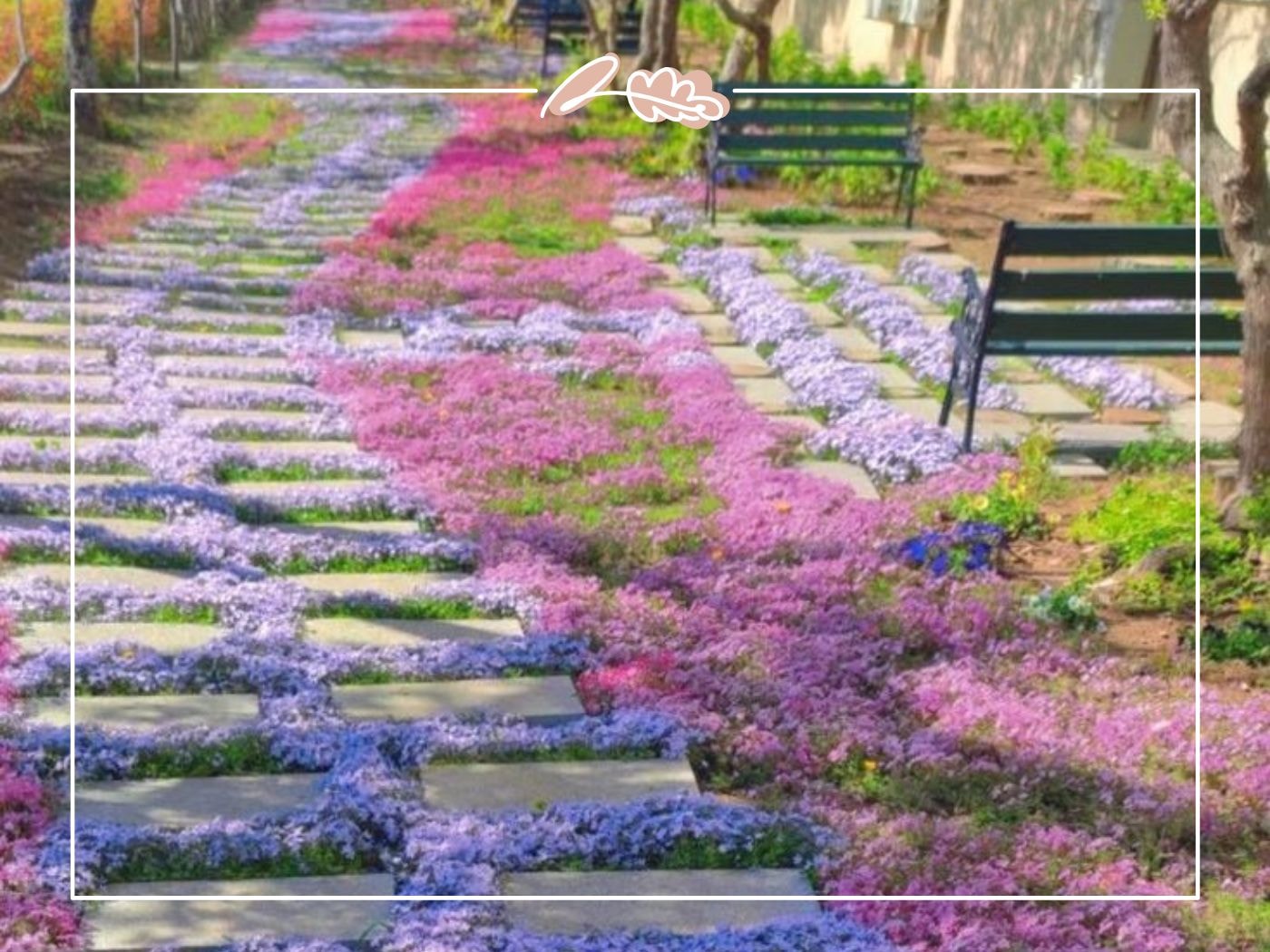
Flowering Ground Covers
-
Creeping Phlox (Phlox subulata) This spring bloomer creates carpets of star shaped flowers in pink, purple, white, and blue. Its ability to cascade over walls and rocks makes it perfect for rock gardens and border edges.
-
Sweet Alyssum (Lobularia maritima) Tiny, honey-scented white flowers cover this low-growing annual from spring until frost. New varieties in purple and pink expand design possibilities while maintaining the classic honey fragrance.
-
Creeping Thyme (Thymus serpyllum) Aromatic foliage releases its scent when stepped upon, while tiny pink or purple flowers attract bees and butterflies. This drought tolerant ground cover tolerates light foot traffic.
-
Snow-in-Summer (Cerastium tomentosum) Silver foliage creates a beautiful backdrop for the masses of small white flowers that give this plant its poetic name. Ideal for rock gardens and sunny spots with poor soil.
-
Ajuga (Ajuga reptans) Glossy, often colorful foliage supports spikes of blue, purple, or pink flowers in spring. This shade-tolerant ground cover fills in quickly, suppressing weeds and preventing erosion.
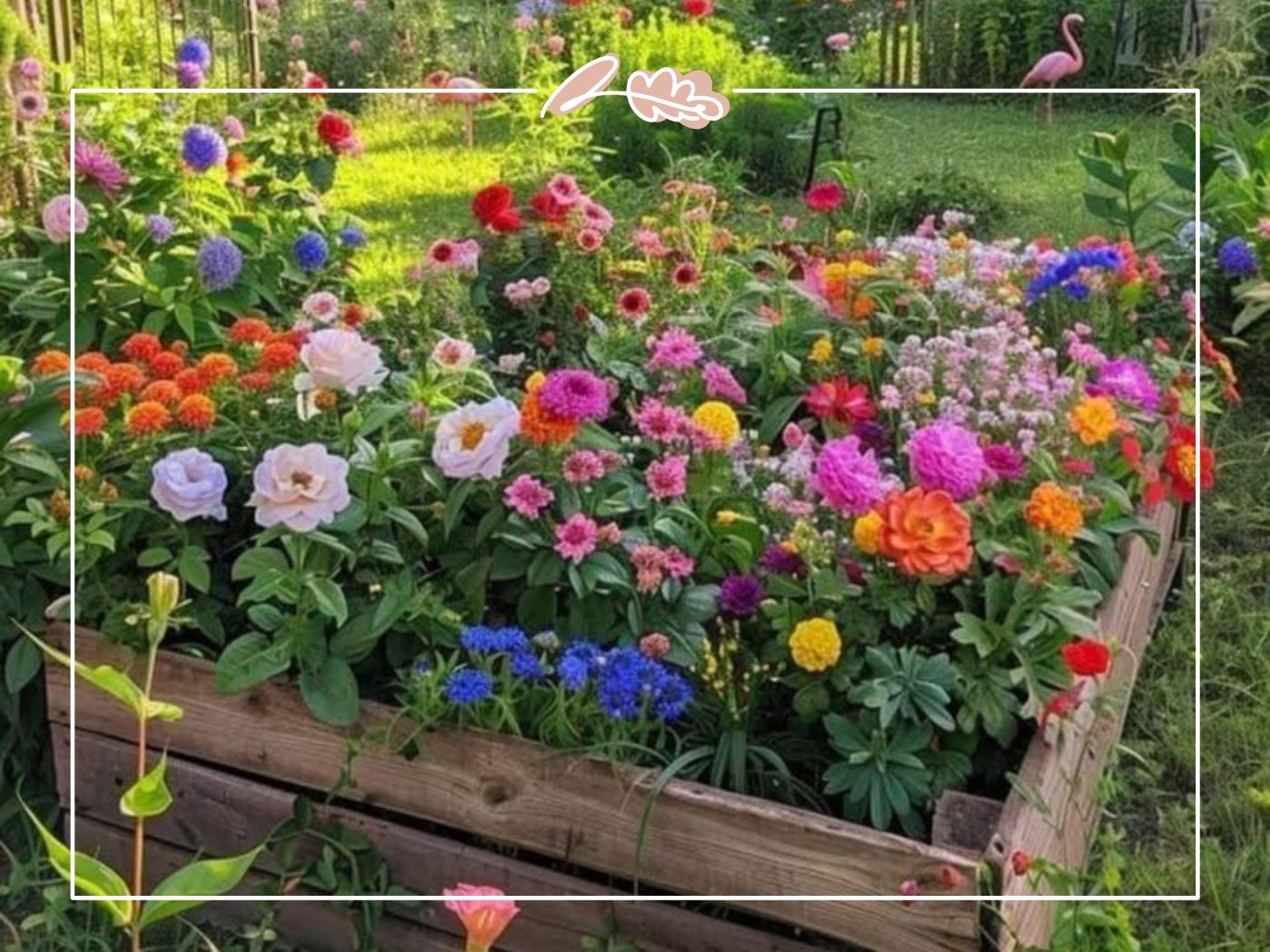
Wildflowers and Natives
-
Milkweed (Asclepias spp.) Essential for monarch butterfly reproduction, milkweed species offer complex flower structures in orange, pink, white, or purple. Some varieties, such as Asclepias perennis, are known for their distinctive waxy white flowers, which stand out in wild settings and native gardens. Their seedpods create winter interest with silky floss.
-
Bee Balm (Monarda spp.) Whorls of tubular flowers in red, pink, purple, or white sit atop aromatic foliage. Native to North America, these perennials attract bees, butterflies, and hummingbirds to the garden.
-
California Poppy (Eschscholzia californica) Beyond the classic orange, California poppies now come in cream, yellow, pink, and red. These drought tolerant annuals self-seed gently to create naturalistic drifts in sunny gardens.
-
Purple Coneflower (Echinacea purpurea) Native to central and eastern North America, this perennial produces daisy-like purple flowers with prominent cones. Its medicinal properties match its ornamental value.
-
Peruvian Lily (Alstroemeria) Though native to South America rather than Peru specifically, these long-lasting cut flowers produce lily-like blooms on sturdy stems. New compact varieties work well in containers and borders.
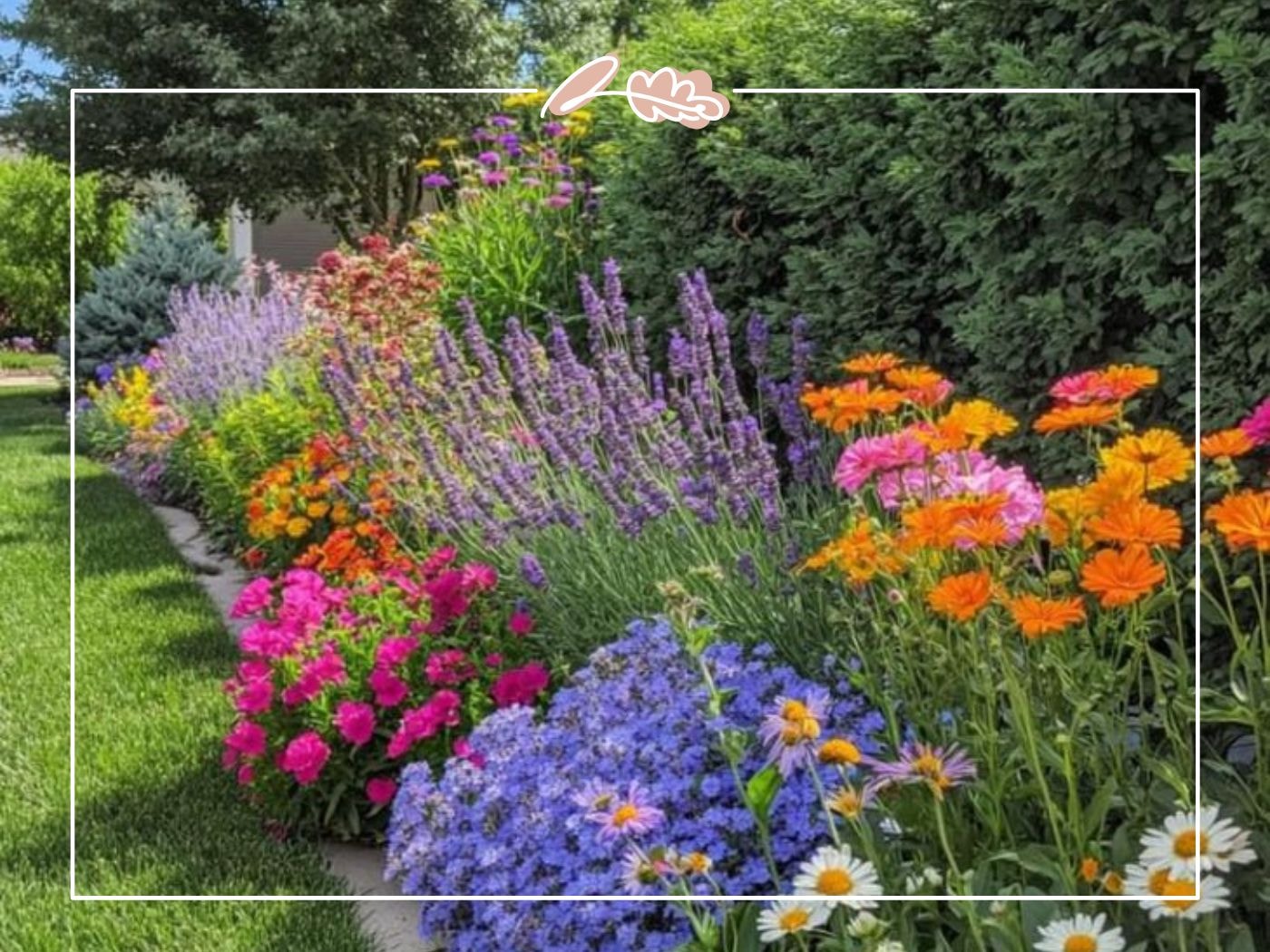
South African Gardens and Cut Flowers
South Africa is celebrated globally for its extraordinary floral diversity and stunning natural landscapes, making it a treasure trove for gardeners and florists alike. The country's unique climate zones, ranging from Mediterranean in the Western Cape to subtropical along the eastern coast, create ideal conditions for a wide variety of flowering plants to flourish. This rich biodiversity is exemplified by the Cape Floristic Region, one of the world’s six floral kingdoms and the smallest yet most diverse, boasting over 9,000 plant species, many of which are endemic and cannot be found anywhere else on Earth.
The Diversity of South African Gardens
South African gardens often reflect this botanical richness, blending native wildflowers with exotic species to create vibrant, sustainable landscapes. Gardeners in South Africa frequently embrace indigenous plants that are well adapted to local conditions, such as drought tolerance and resistance to pests, making them both beautiful and practical choices for water-wise gardening.
Key native plants that feature prominently in South African gardens include the protea family, ericas, aloes, and restios. Proteas, often referred to as the "king of flowers," are especially iconic. These flowers are not only visually striking with their large, sculptural blooms and bold colours but also symbolise change and hope, deeply rooted in South African culture and heritage. Gardeners prize proteas for their longevity and ability to thrive in poor soils, often creating dramatic focal points in garden beds or naturalistic landscapes.
Ericas, known as heaths or heathers, offer delicate, bell-shaped flowers in hues of pink, white, and purple, adding texture and softness to garden designs. Aloes, with their spiky succulent leaves and tubular flowers, provide year-round interest and attract pollinators such as sunbirds and bees. Restios, reed-like plants native to the fynbos biome, contribute architectural elegance and are often used as ornamental grasses in garden compositions.
In addition to native species, South African gardens incorporate a range of exotic plants suited to the climate, including roses, lilies, and hydrangeas, which complement the indigenous flora. This harmonious mix creates gardens that are both ecologically responsible and visually captivating, showcasing a palette of vibrant flowers and lush foliage throughout the year.
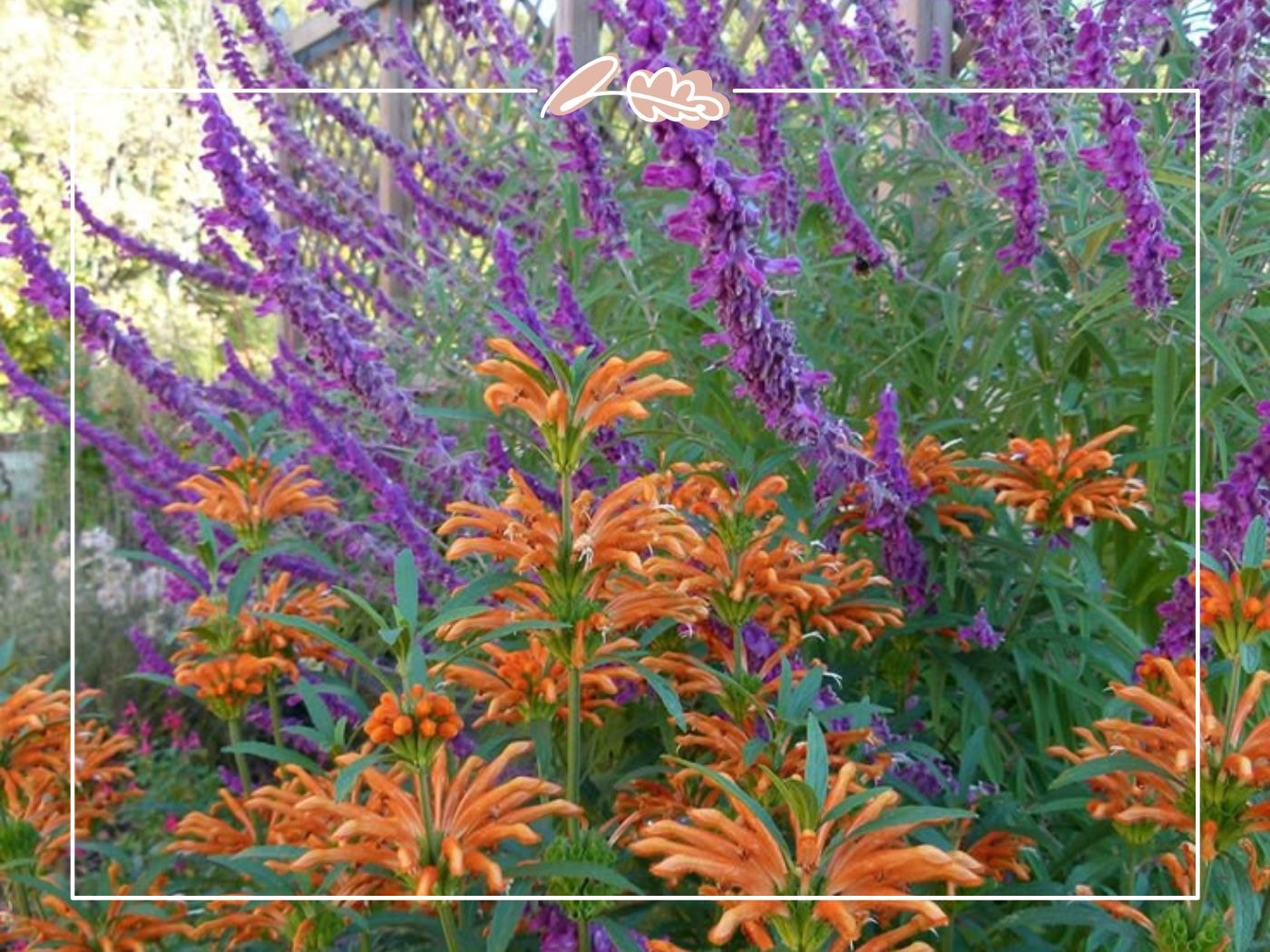
South African Cut Flowers in the Florist Industry
South Africa's floriculture industry is a vital part of the country's economy and a significant player in the global flower market. The nation is among the top exporters of cut flowers worldwide, supplying a broad range of exquisite blooms to international markets in Europe, the Middle East, and Asia. The success of this industry is driven by South Africa’s favourable growing conditions, skilled growers, and advanced horticultural practices.
Proteas: The National Floral Treasure
Proteas are the flagship cut flowers of South Africa and hold a special place in the hearts of locals and flower enthusiasts worldwide. With over 330 species in the Proteaceae family, these flowers are renowned for their large, showy flower heads composed of numerous small florets surrounded by colourful bracts. The King Protea (Protea cynaroides), South Africa’s national flower, is particularly prized for its dramatic size and striking appearance.
In the florist industry, proteas are highly valued for their long vase life, unique texture, and bold colours ranging from deep reds and pinks to creamy whites. They are frequently used in contemporary floral arrangements, wedding bouquets, and as statement flowers in home décor. Their sturdy stems and slow wilting make them ideal for long-distance transport and extended display.
Gerbera Daisies: Cheerful and Versatile
Another star of South African floriculture is the gerbera daisy, which is indigenous to the region and widely cultivated for its bright and cheerful blooms. Gerberas are available in a vast spectrum of colours, including reds, pinks, oranges, yellows, and whites, making them a versatile choice for any floral arrangement.
Gerberas are favoured by florists for their vibrant colours and impressive vase life, often lasting up to two weeks when properly cared for. Their daisy-like form adds a fresh and lively touch to bouquets, centerpieces, and floral displays. South African gerberas are exported globally, contributing significantly to the country's flower export earnings.
Bird of Paradise: Exotic Tropical Flair
The bird of paradise (Strelitzia reginae) is another iconic South African flower that captivates with its exotic form and vivid colours. The flowers resemble the head of a tropical bird with bright orange and blue petals, adding a dramatic flair to floral arrangements.
Birds of paradise are popular in both domestic and commercial flower markets due to their unique shape and long-lasting blooms. They thrive in subtropical climates and are often used in wedding bouquets, tropical-themed arrangements, and as striking focal points in home décor.
Alstroemeria (Peruvian Lily): Long-Lasting Elegance
Alstroemeria, commonly known as the Peruvian lily, is widely grown in South Africa and appreciated for its delicate, lily-like flowers that come in a variety of colors such as pink, orange, red, purple, and white. These flowers are prized for their long vase life and durability, making them a favourite among florists for mixed bouquets and floral arrangements.
South African growers have developed compact and robust varieties that perform well in both indoor and outdoor settings. Alstroemeria’s vibrant colours and graceful form make it a staple in the florist industry, extending its popularity beyond local markets to international consumers.
Other Notable Cut Flowers
South Africa also produces a range of other cut flowers that contribute to the diversity and appeal of its floral industry. These include:
-
Orchids: South Africa cultivates several species of orchids prized for their intricate shapes and exotic beauty. Orchids are often used in high-end floral arrangements and special occasions.
-
Lilies: True lilies and calla lilies are grown extensively, offering elegant trumpet-shaped flowers in various colours. Calla lilies, with their sculptural form and glossy leaves, are particularly popular for weddings and formal events.
-
Roses: While not native, roses are widely cultivated in South Africa’s temperate regions and form a significant part of the cut flower market. The country produces a variety of rose colours and forms, catering to diverse consumer preferences.
-
Chrysanthemums and Carnations: These flowers are also grown commercially, valued for their long vase life and availability in multiple colours.
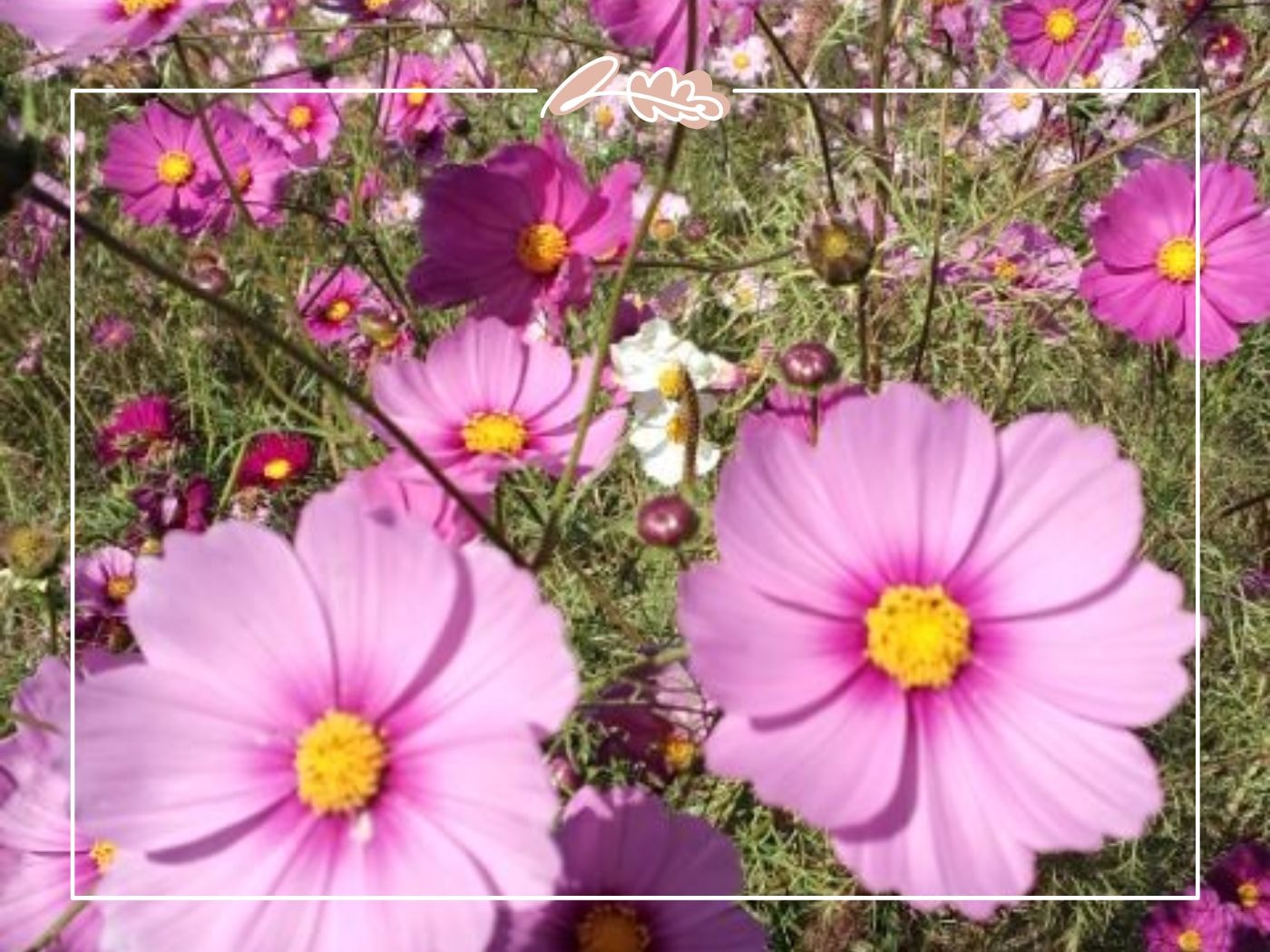
Sustainable and Innovative Practices
South African flower growers are increasingly adopting sustainable and innovative horticultural practices to meet the demands of environmentally conscious consumers. Water conservation techniques, integrated pest management, and organic farming are becoming more prevalent, ensuring that the flowers not only look beautiful but are also grown responsibly.
Greenhouse technologies and controlled environment agriculture allow for year-round production of many flower species, enhancing the availability and quality of cut flowers in the florist industry. These advancements also contribute to reducing the carbon footprint associated with flower cultivation and export.
Bringing South African Blooms to Your Home
Whether you are a gardener inspired by South Africa’s rich floral heritage or a flower lover seeking fresh cut flowers with unique character, South African blooms offer an incredible range of options.
Conclusion
The world of flower species truly is a wonderland of diversity, offering something perfect for every garden, regardless of size, style, or growing conditions. From the first snowdrops of early spring to the last chrysanthemums of autumn, from towering delphiniums to tiny alpine gems, there’s a flower out there waiting to steal your heart.
As you explore these fifty magnificent flower species, remember that gardening is both an art and a relationship—one that rewards your care and attention with incomparable beauty. Start with a few varieties that speak to your soul, then gradually expand your floral family as your confidence and space allow.
Whether you’re drawn to the sophisticated elegance of lilies, the cottage garden charm of foxgloves, or the wild beauty of native meadow flowers, your garden becomes a reflection of your personal style and the joy you find in nature’s incredible diversity.
Which of these flower species will earn a place in your garden this season? The adventure begins with a single bloom!
Shop Fabulous Flowers and our collection of bouquets; 50 Roses Bouquet | Artificial Flower Bouquets | Beautiful Bouquet of Flowers | Big Bouquet of Flowers | Birthday Bouquet | Birthday Flower Bouquets | Birthday Rose Bouquet | Bouquet | Chocolate Bouquet | Chocolate Flower Bouquet | Daisy Bouquet | Ferrero Rocher Bouquet | Florist Choice Bouquets | Flower Bouquets | Flower Bouquets under R500 | Flower Bouquets R500 - R999 | Happy Birthday Flower Bouquet | Hydrangea Bouquet | Huge Bouquet of Roses | Large Bouquet of Roses | Graduation Bouquet | Large Bouquet of Roses | Lily Bouquets | Luxury Flower Bouquets | Mixed Flower Bouquets | Peony Bouquets | Pink Rose Bouquets | Protea Bouquets | Purple Flower Bouquet | Red Flower Bouquet | Rose Bouquets | Simple Protea Bouquet | Sunflower Bouquets | Thank You Flower Bouquet | Tulip Bouquets | White Flower Bouquet | White Rose Bouquets
Flower FAQs – Everything You’ve Ever Wondered
Q: When do flowers bloom?
A: Most flowers bloom in spring and summer, responding to warmth and longer daylight hours. Some, like pansies and camellias, even bloom in cooler seasons. Each flower follows its own rhythm, just like the people we love.
Q: When should I plant flowers?
A: The best time to plant depends on the type. Annuals do well in spring after frost; perennials prefer autumn or early spring. Think of planting as a love letter to future you—sent in soil and sunshine.
Q: How do I plant flowers?
A: Choose a sunny spot, prepare the soil by loosening it, and enrich it with compost. Dig a hole twice as wide as your flower’s root ball, place the flower in, cover with soil, water gently, and whisper a wish.
Q: How do I plant flowers from seeds?
A: Start with moist seed-starting mix. Sow seeds as directed on the packet (some need light, others dark). Keep warm and gently watered. Seedlings are like baby dreams—nurture them patiently and watch beauty bloom.
Q: How do I grow flowers in pots?
A: Choose containers with drainage, fill with potting mix, plant your flowers, water regularly, and feed them every few weeks. Container gardens bring a little magic to balconies, patios, and window sills.
Q: How do I grow flowers?
A: Sunlight, soil, water, and a little TLC are key. Choose the right plant for your climate, check watering needs, and remove dead blooms to keep them thriving. Growing flowers is growing joy—one petal at a time.
Q: When do roses bloom?
A: Most roses bloom from late spring through early autumn, with many reblooming varieties offering flushes of colour all season long. They're the romantics of the garden—always ready to show love.
Q: When should I plant roses?
A: Early spring or late autumn is best, when the ground is soft and cool. This gives roots time to settle before blooming season. Planting roses is like writing poetry with petals.
Q: Can you grow roses from cuttings?
A: Yes, and it’s easier than you think. Take a healthy stem, dip it in rooting hormone, and plant in moist soil or sand. Keep it humid and shaded. With time and patience, it becomes a blooming reminder that love multiplies.
Q: How do I grow roses from cuttings?
A: Cut a 6-inch piece from a healthy rose, remove lower leaves, and insert into well-drained moist soil. Cover with a plastic bag to create a mini greenhouse, and wait for roots to form. It's like magic—slow and sure.
Q: How do you plant roses?
A: Choose a sunny spot, dig a hole twice as wide as the root ball, mix in compost, place the rose, and water deeply. Mulch to retain moisture. Roses grow best where they feel adored.
Q: How do you take care of roses?
A: Water deeply but not too often. Prune in late winter, feed during growing season, and remove faded blooms. They need light, air, and love—just like us.
Q: How do I draw flowers?
A: Start with basic shapes—circles for centers, ovals for petals. Add detail with veins and shading. Drawing flowers is drawing joy; it’s capturing nature’s softness in pencil strokes.
Q: How do I draw a rose?
A: Begin with a spiral centre, then sketch petals outward like unfolding secrets. Layer your petals with grace. Drawing a rose is like writing a love story, one curve at a time.
Q: How do you take care of flowers?
A: Keep them in fresh water, trim stems every few days, and place them away from heat and direct sunlight. A little daily care keeps the love alive longer, just like any relationship.
Let this guide be your garden companion—whether you're planting a bouquet in the earth, arranging blooms for your table, or simply admiring their grace. And remember, with Fabulous Flowers and Gifts, even a single petal can carry a world of meaning.

